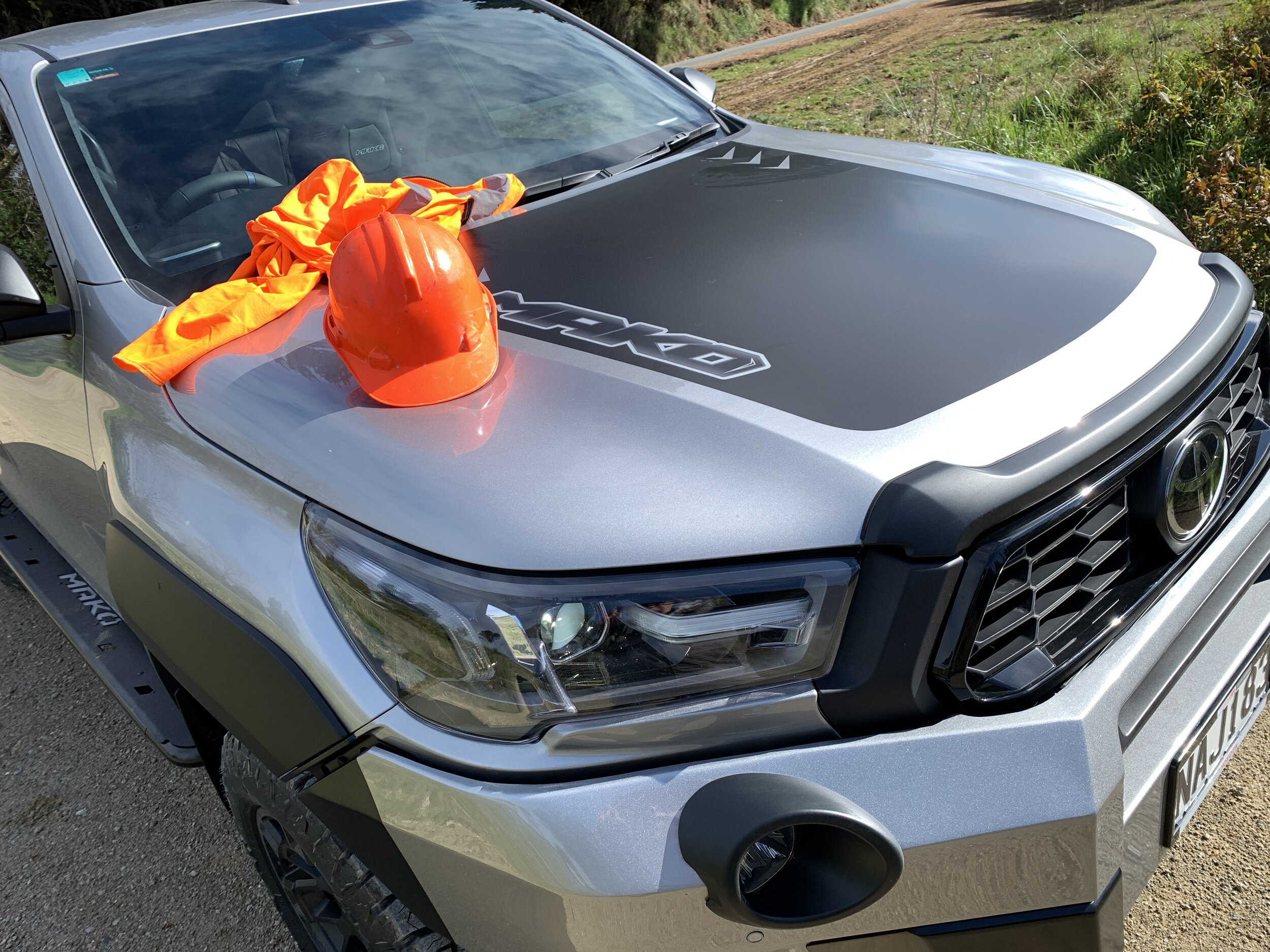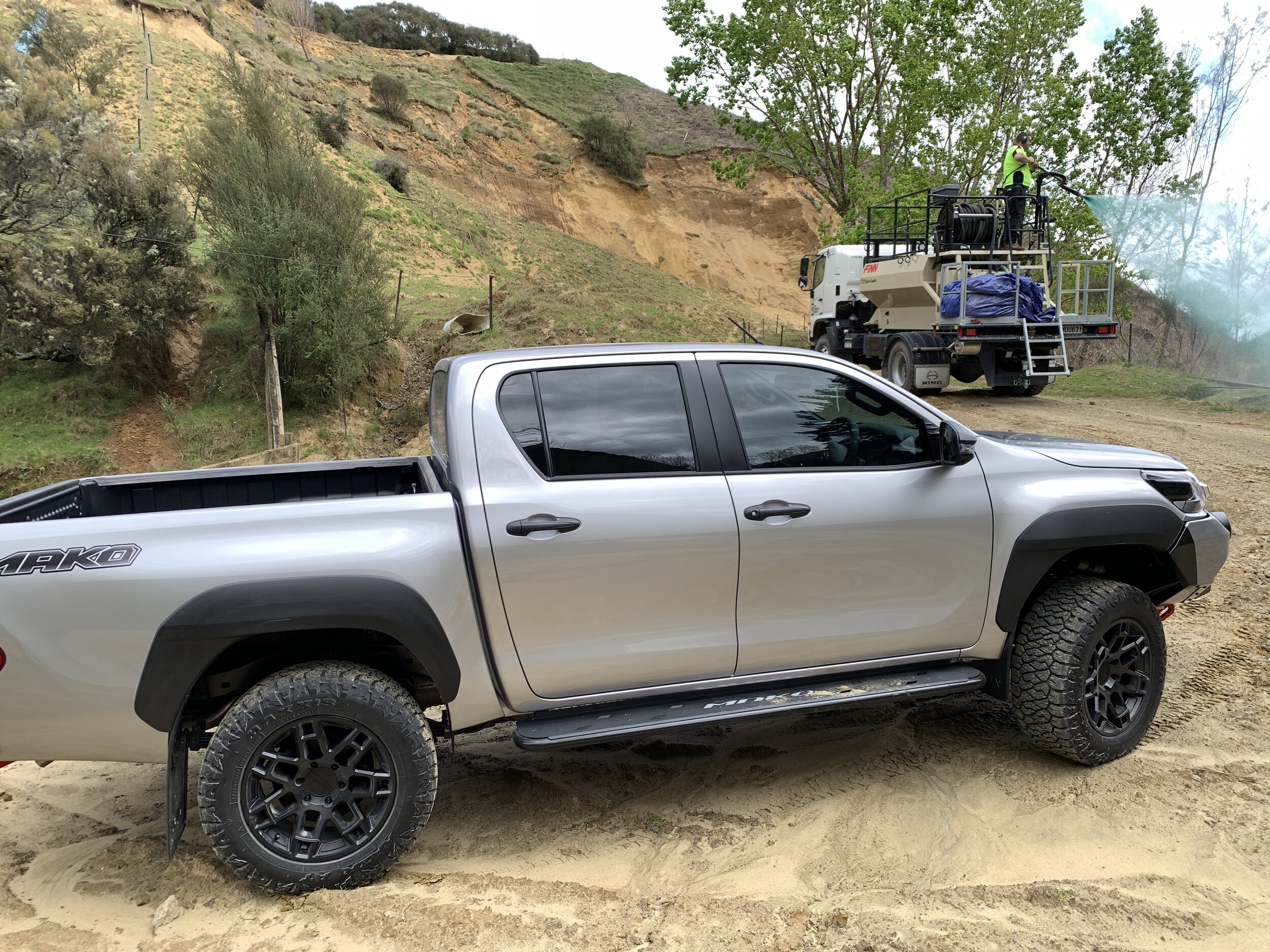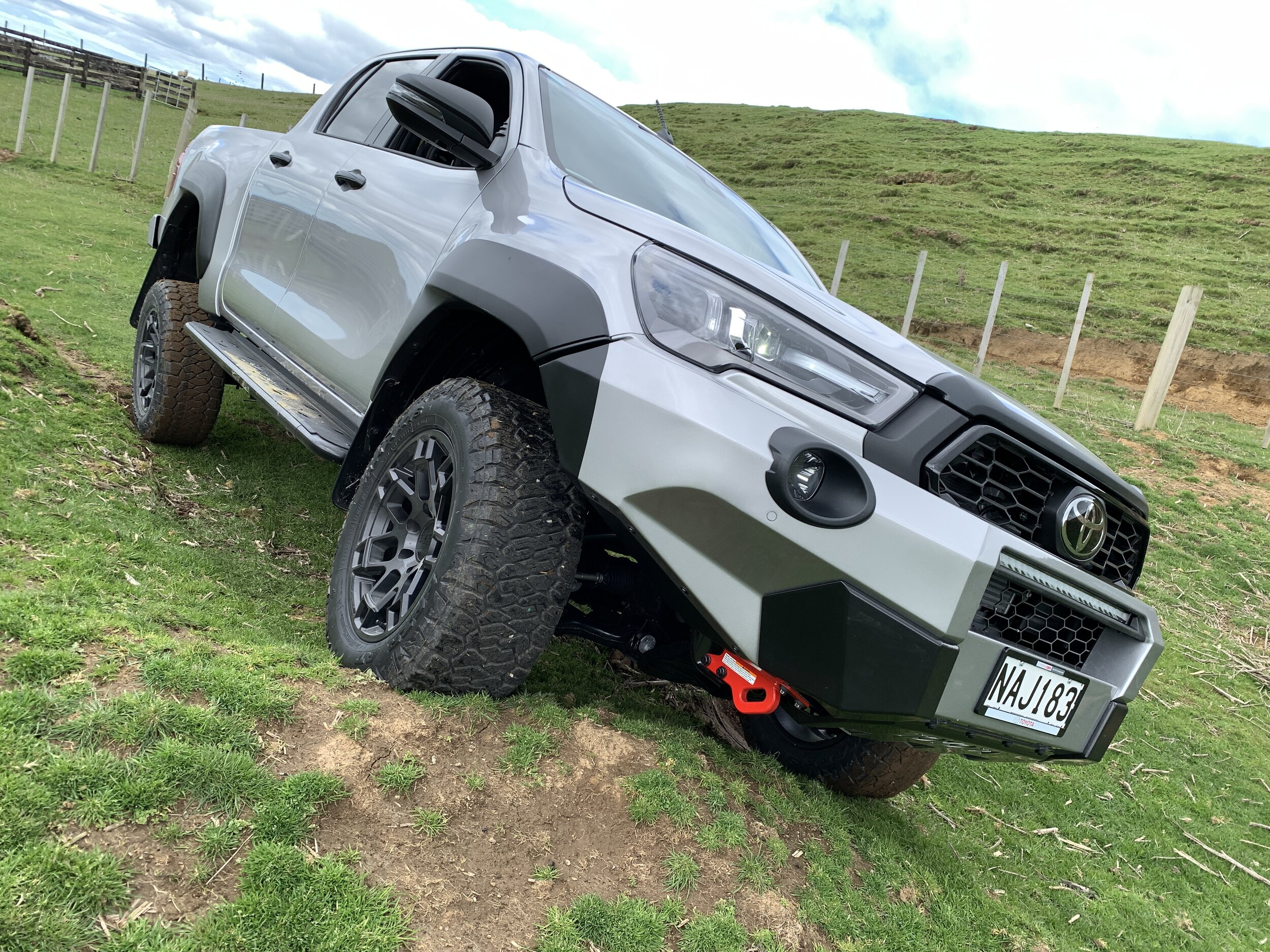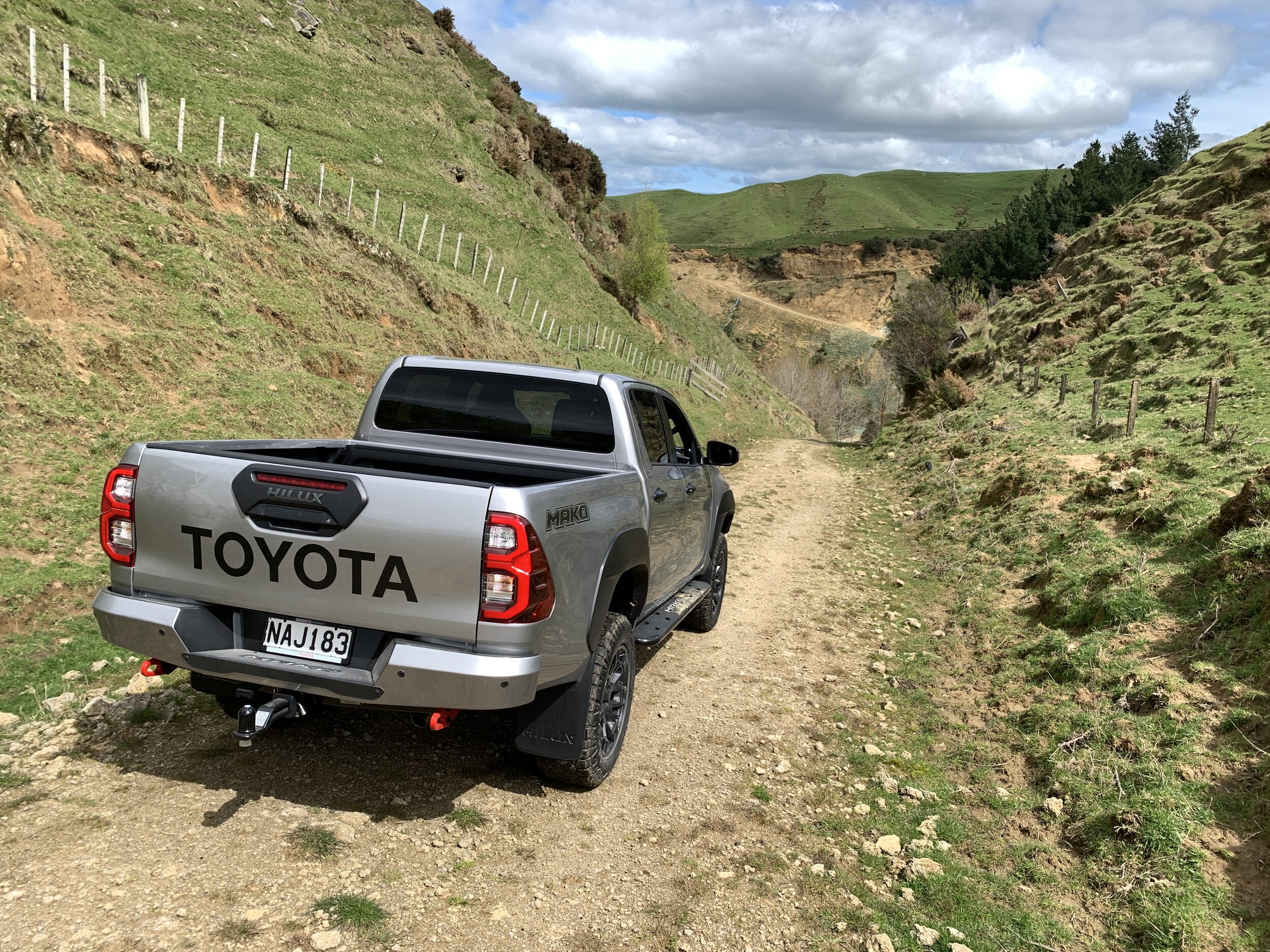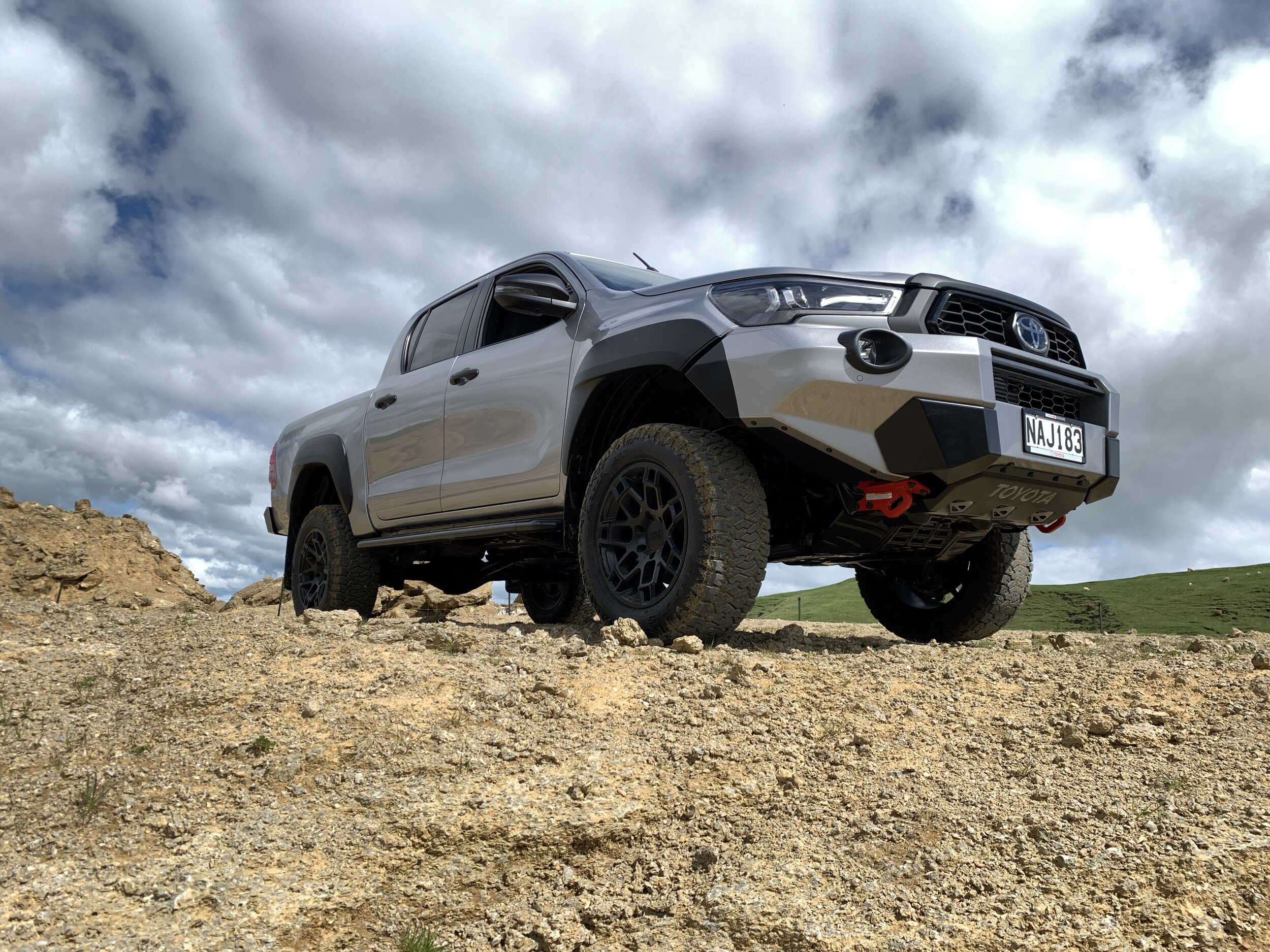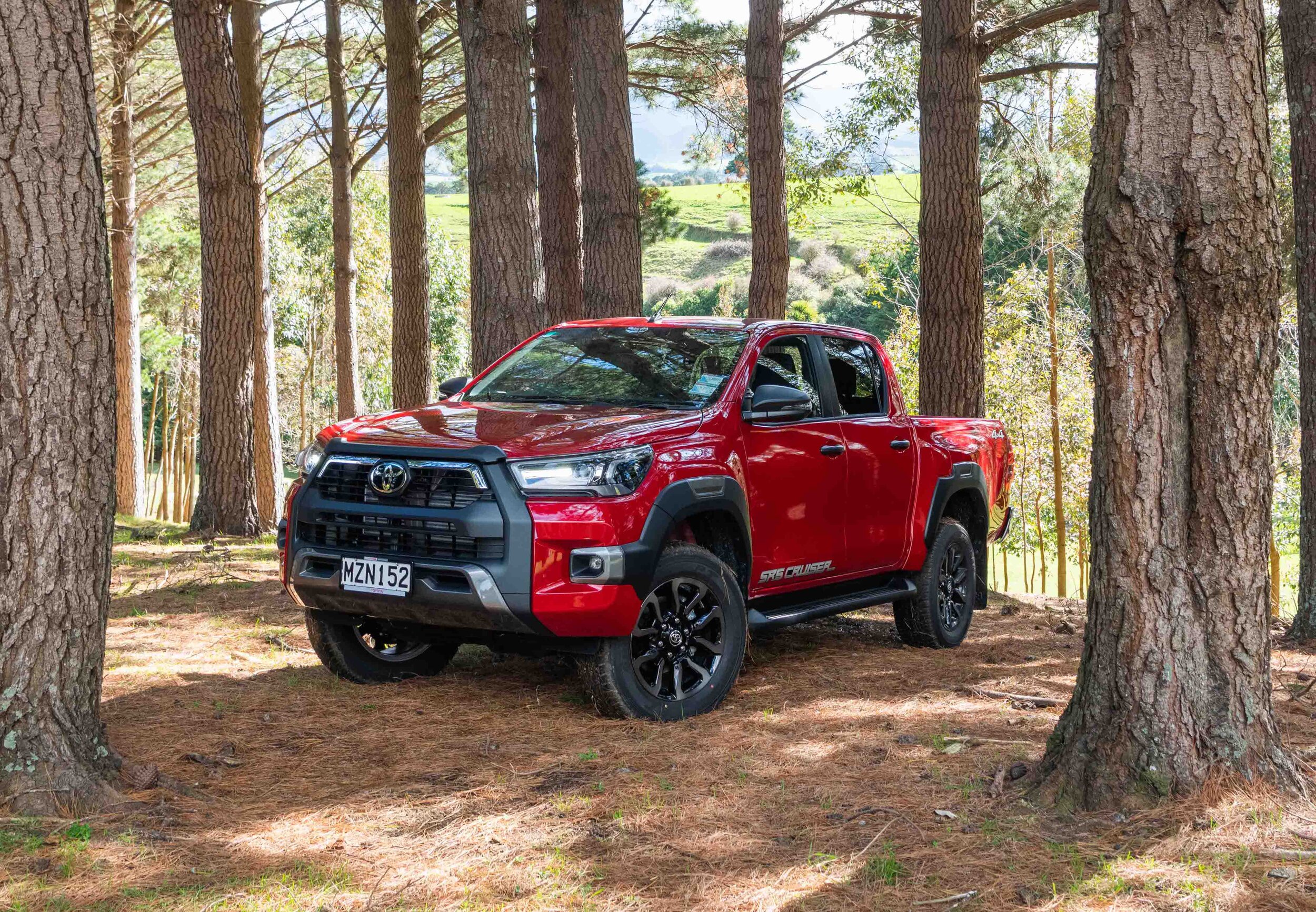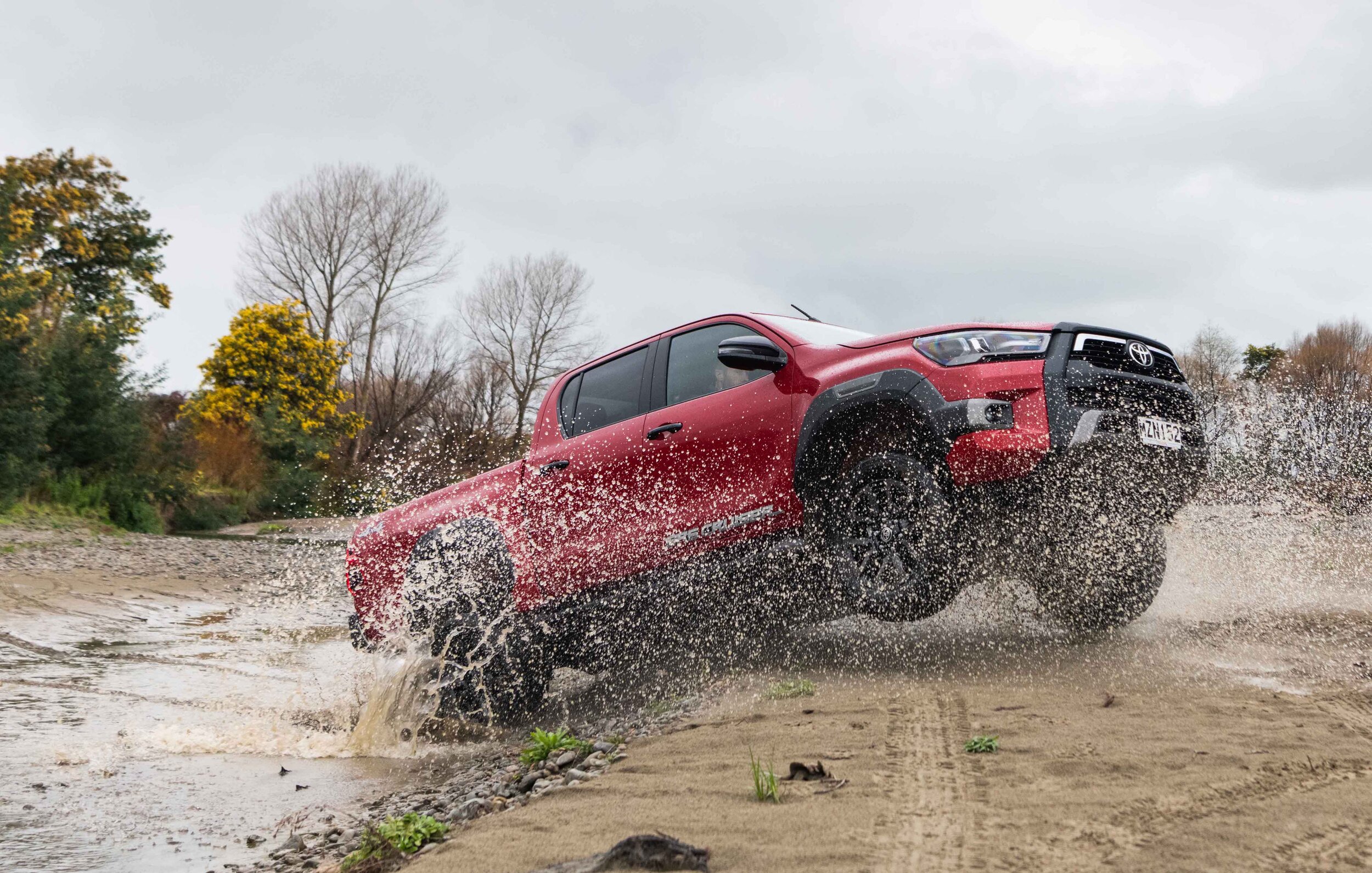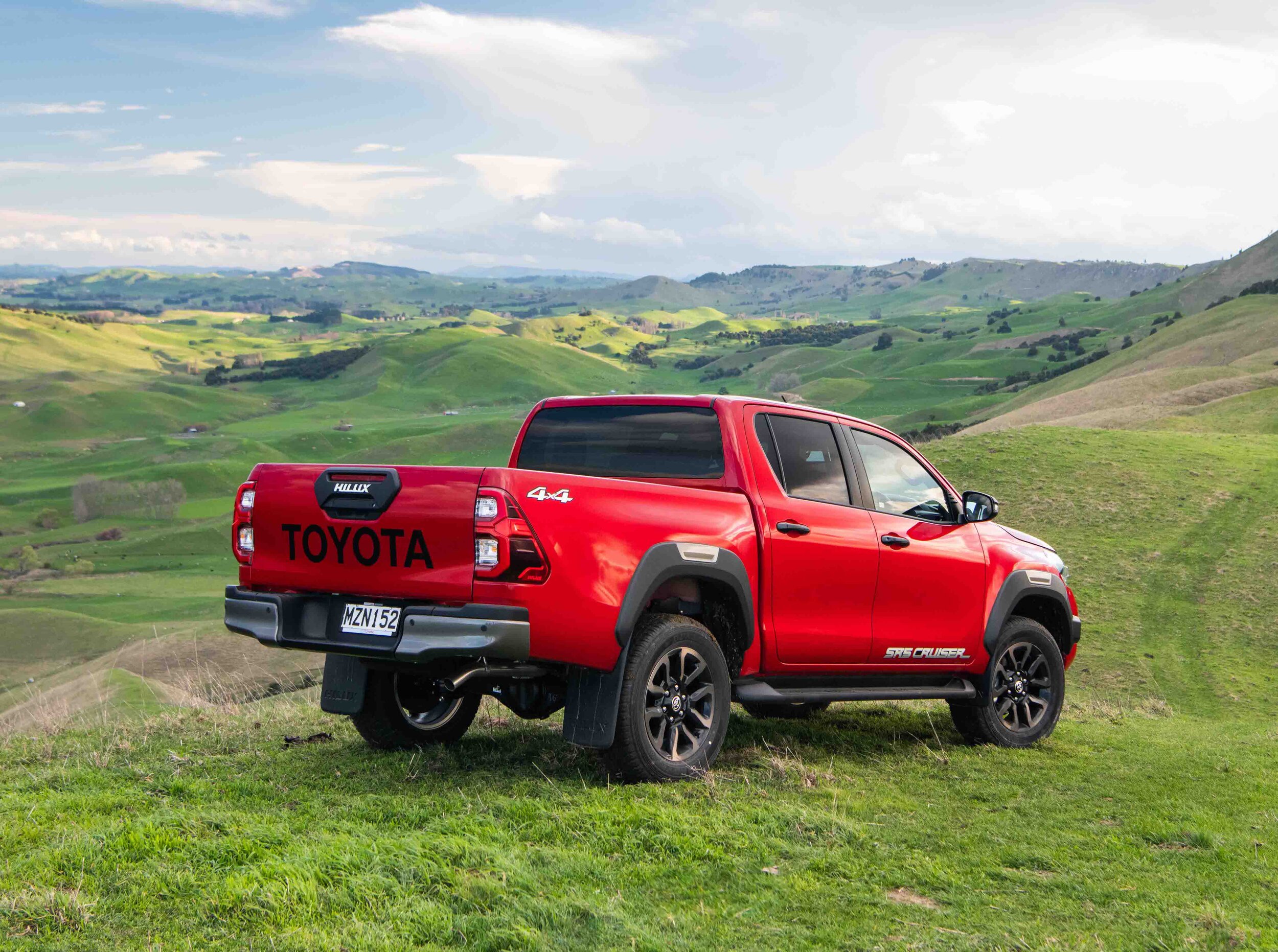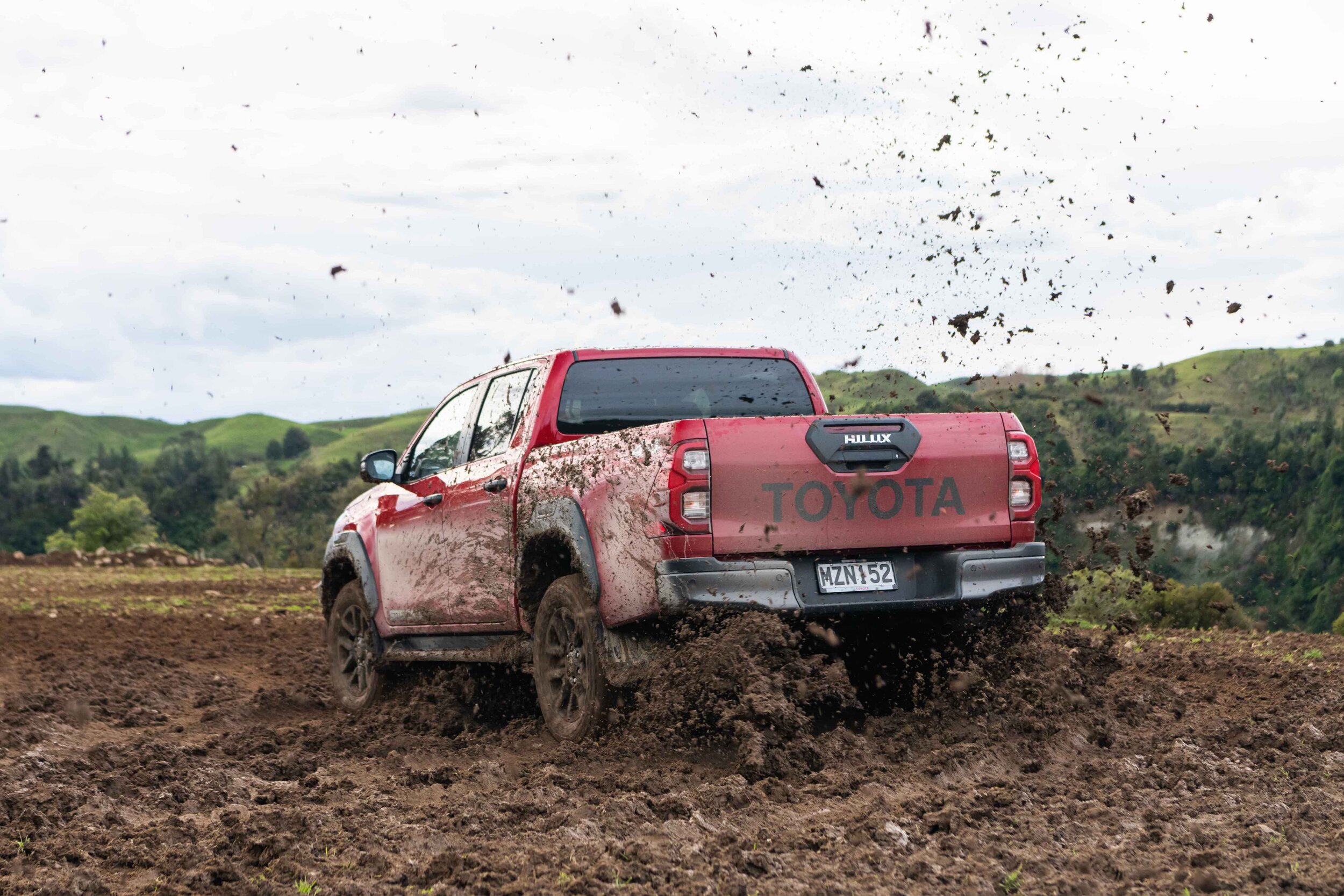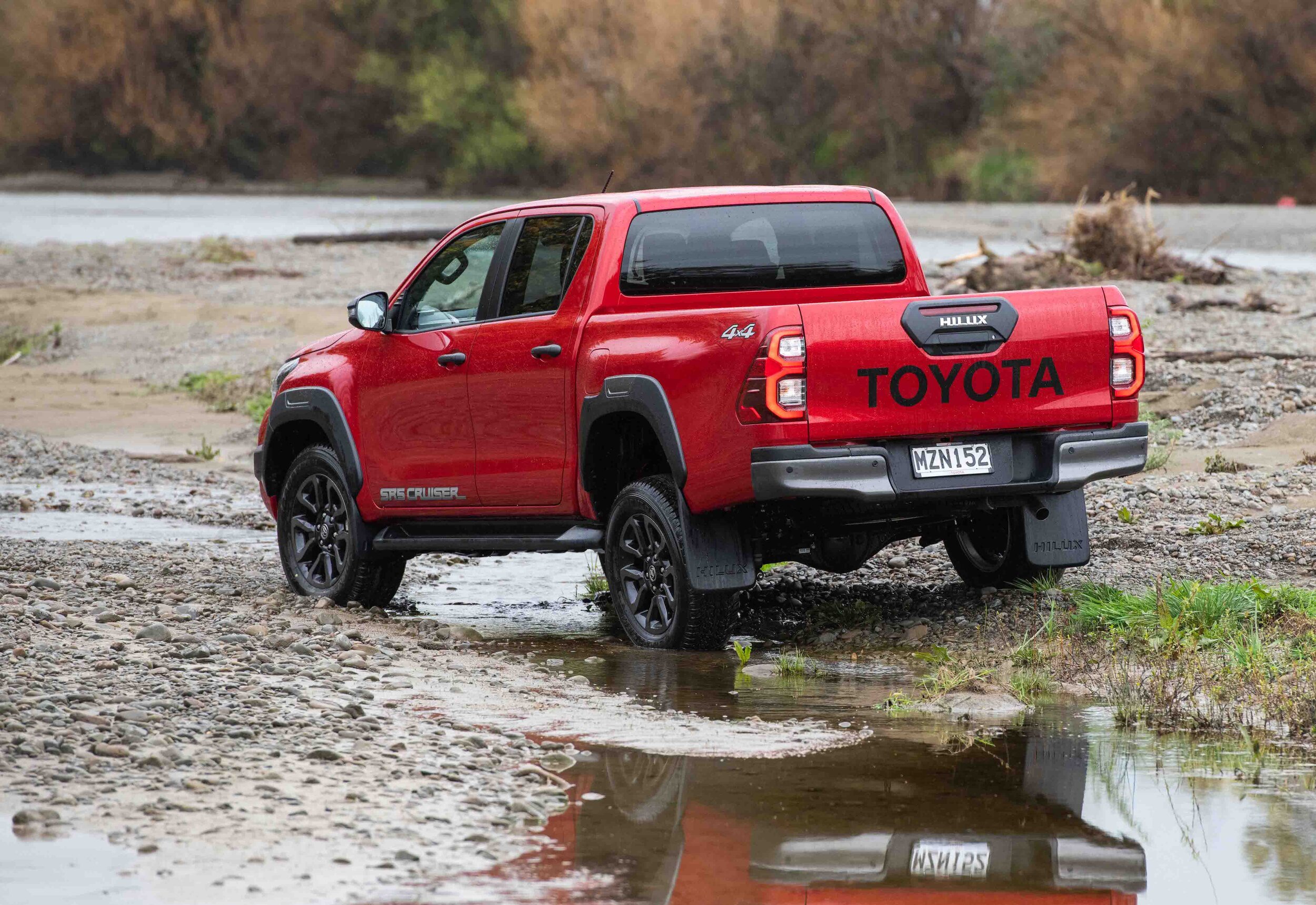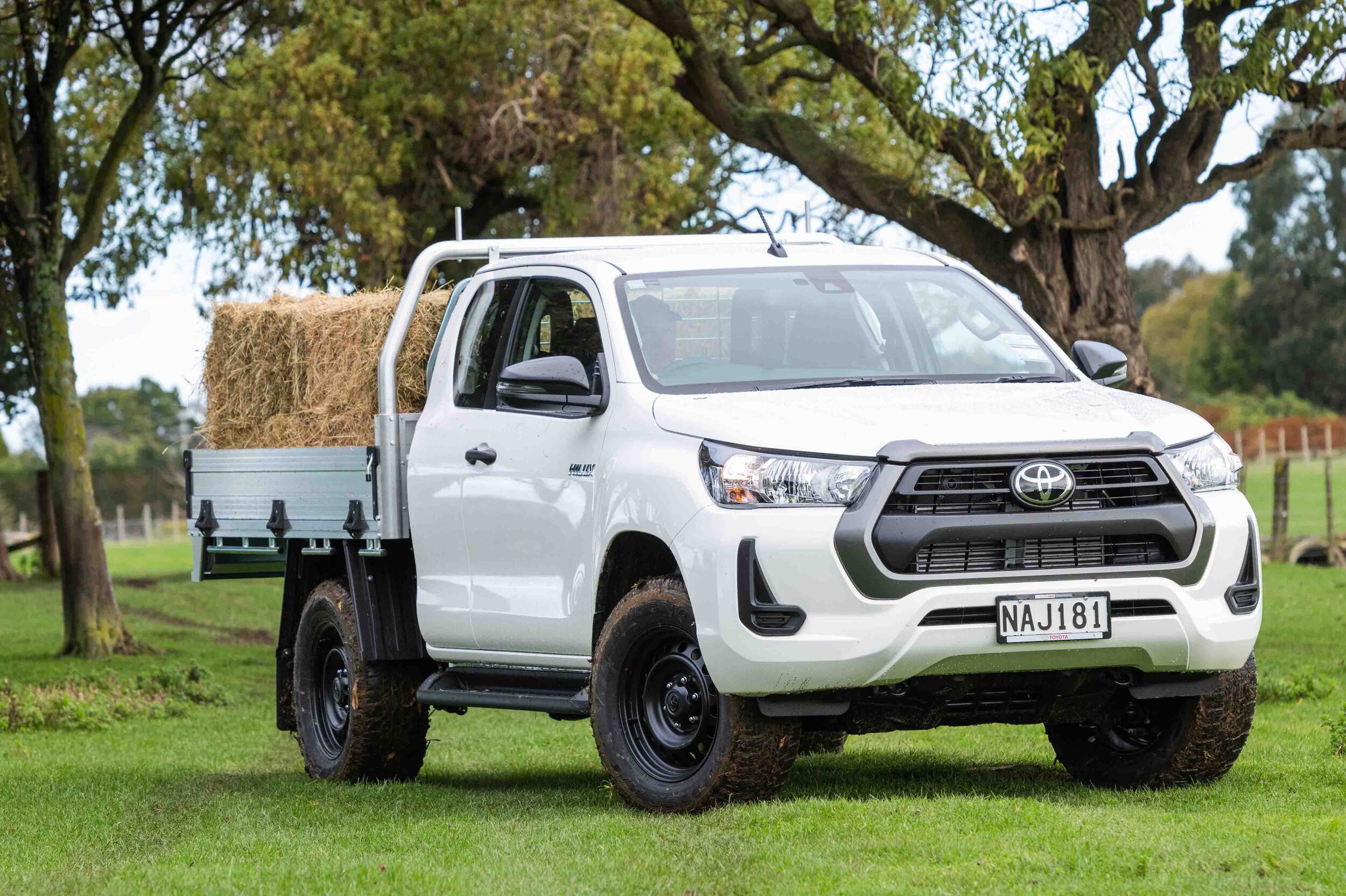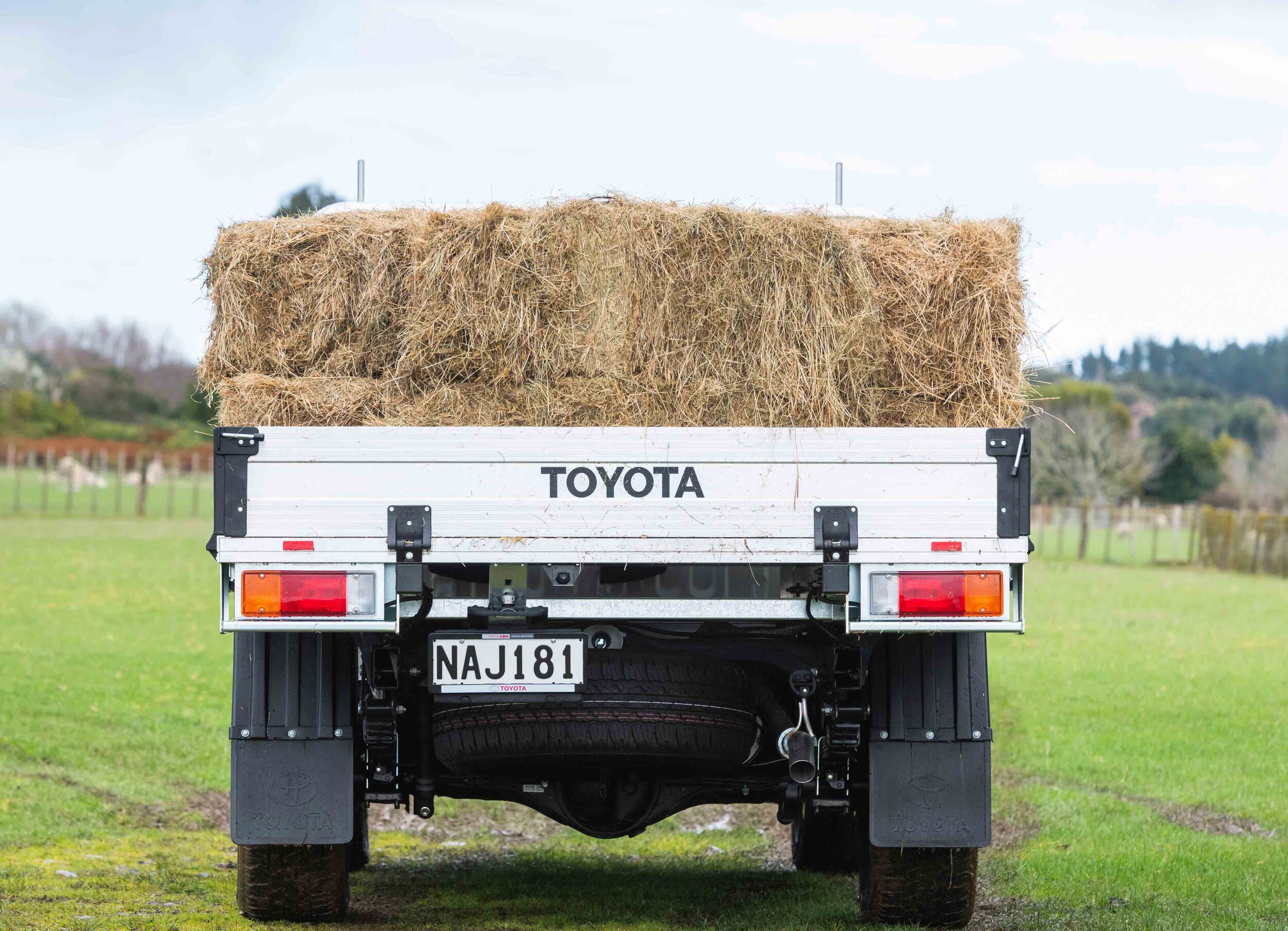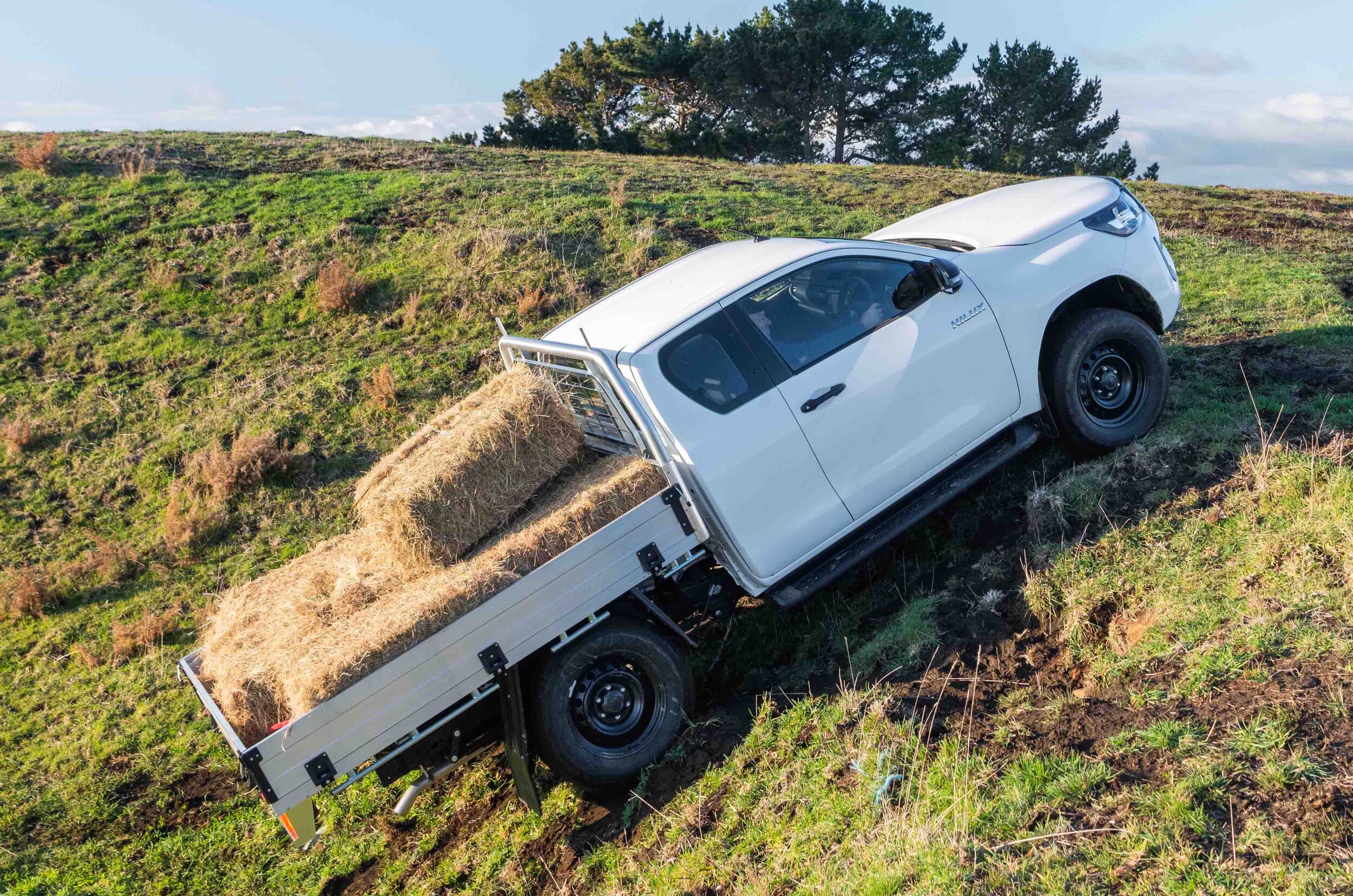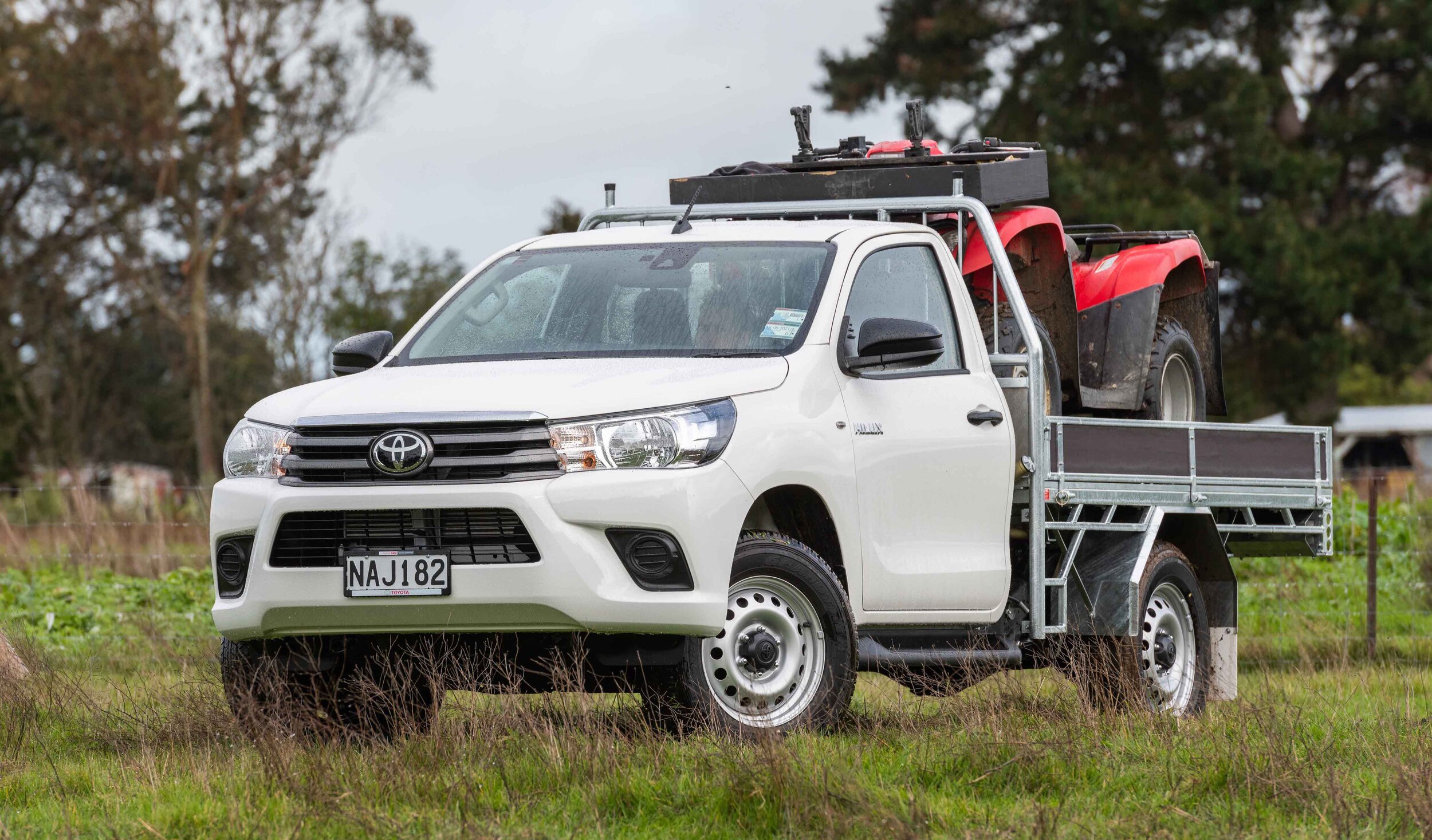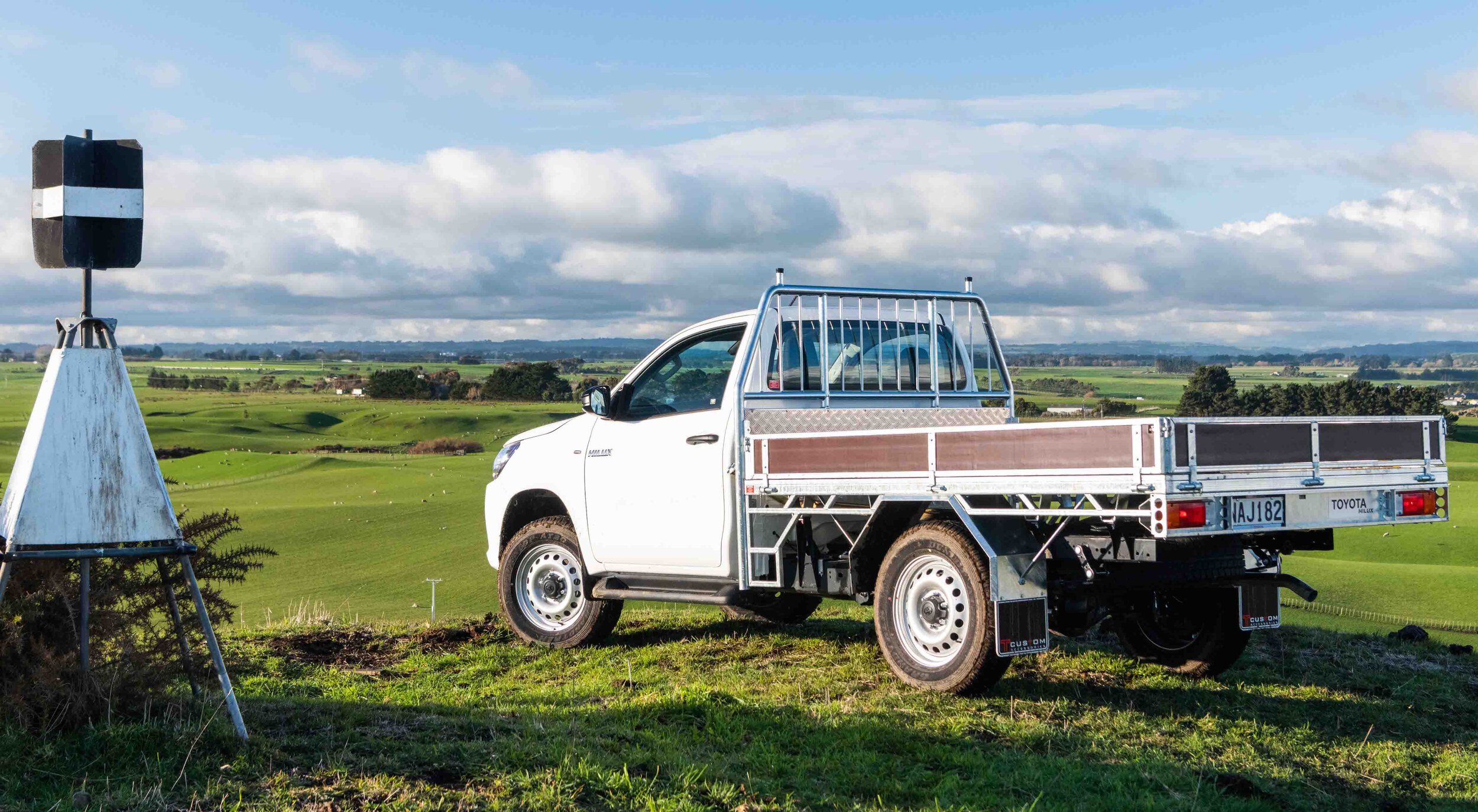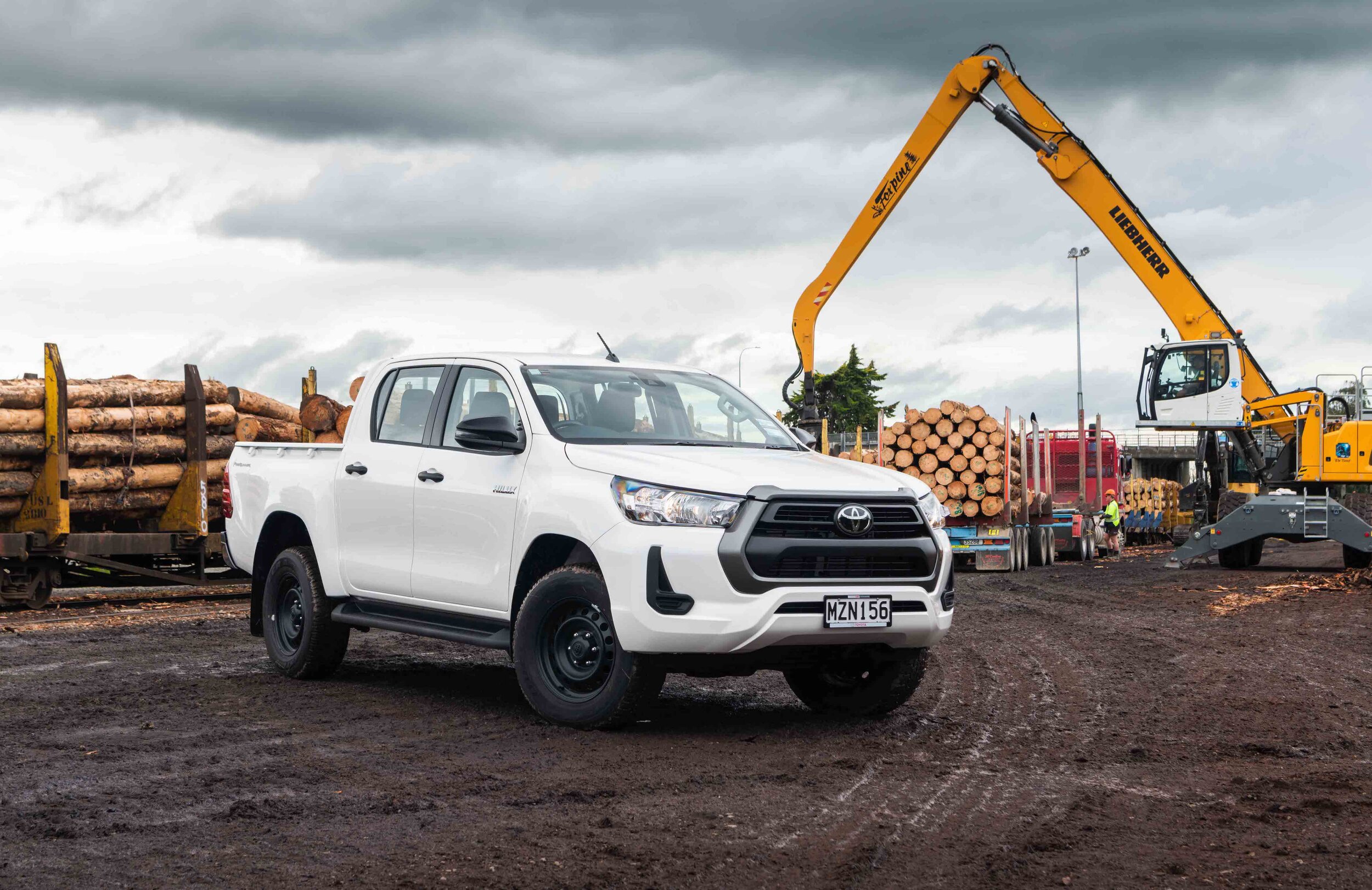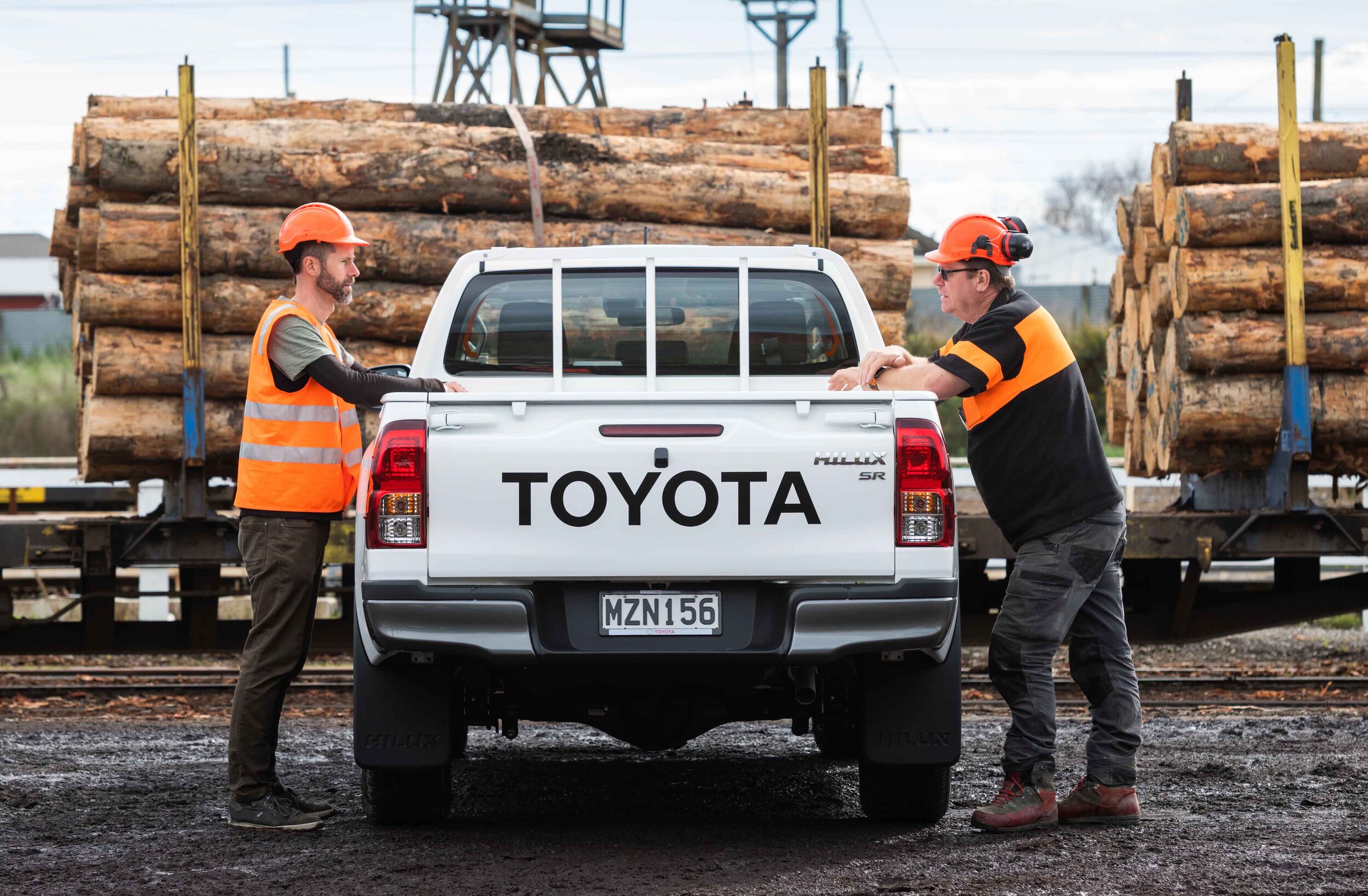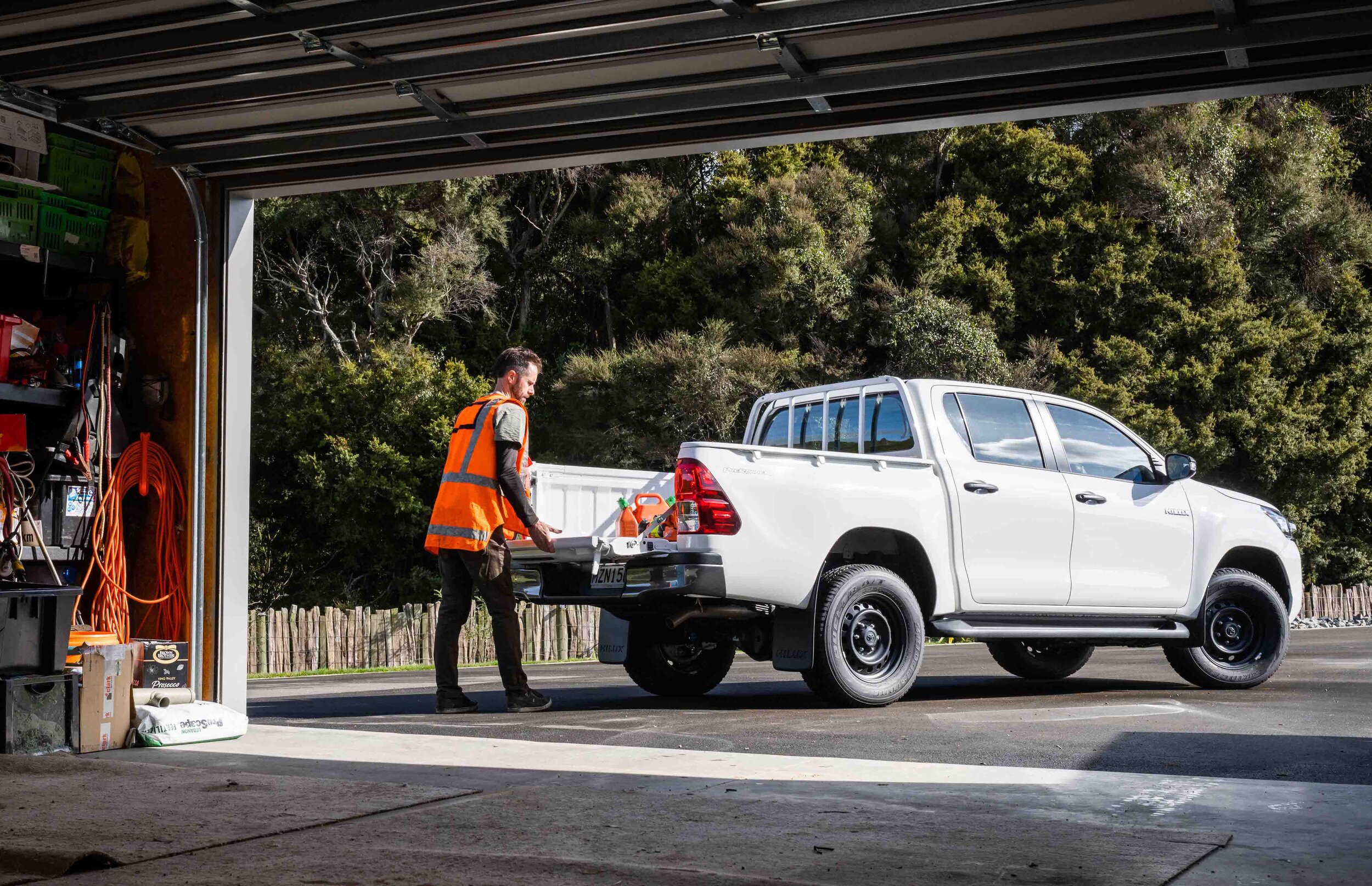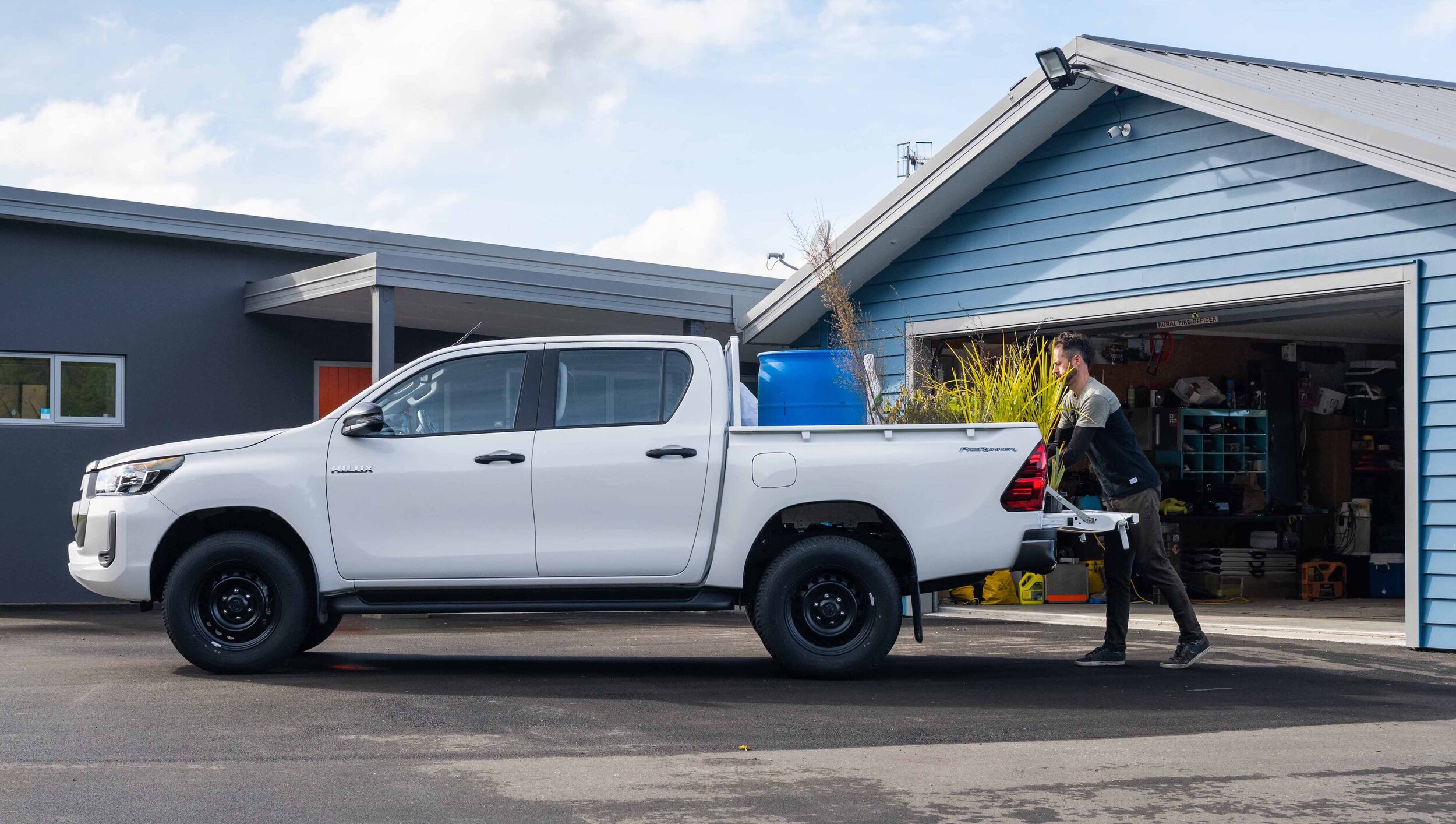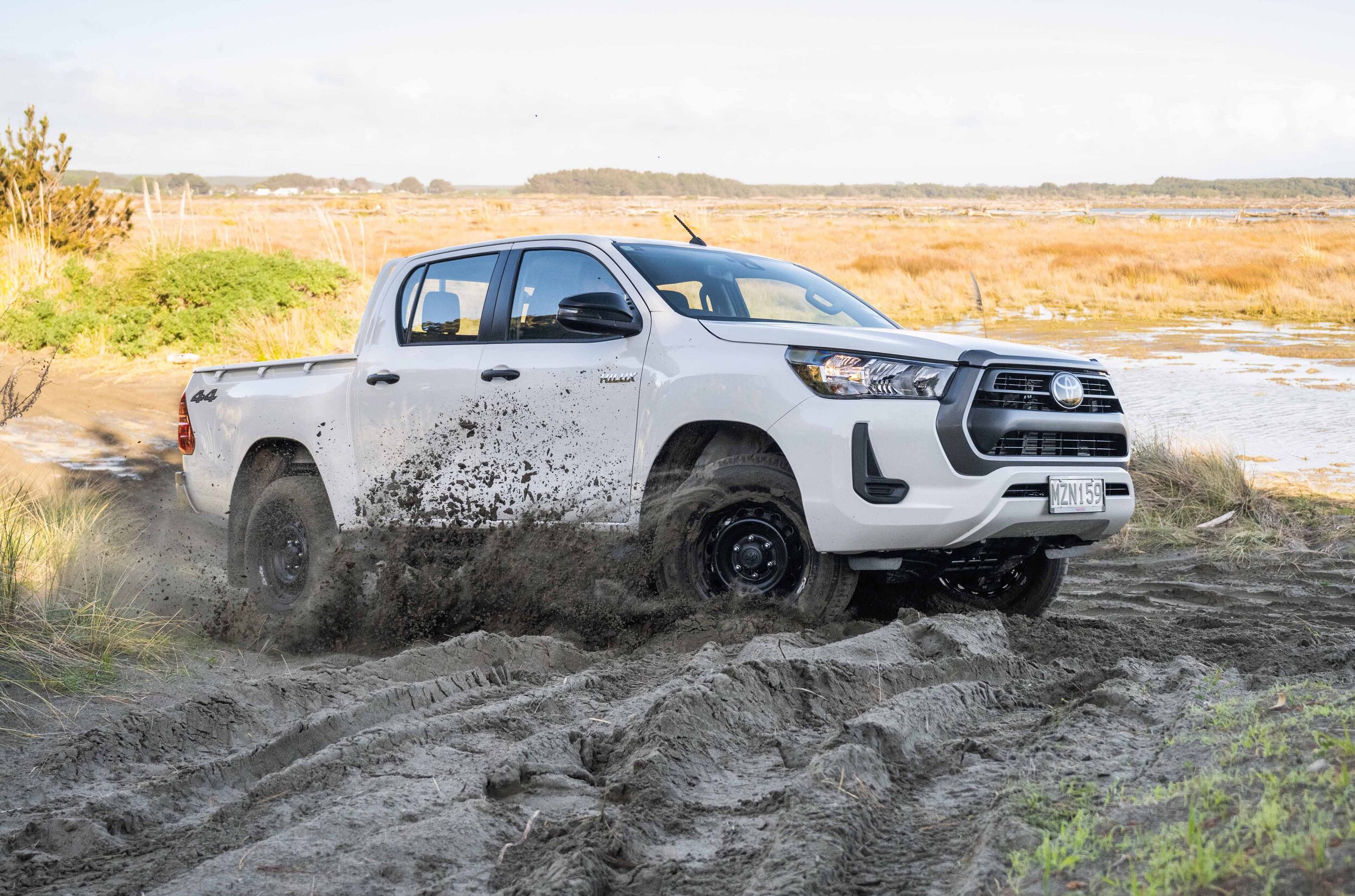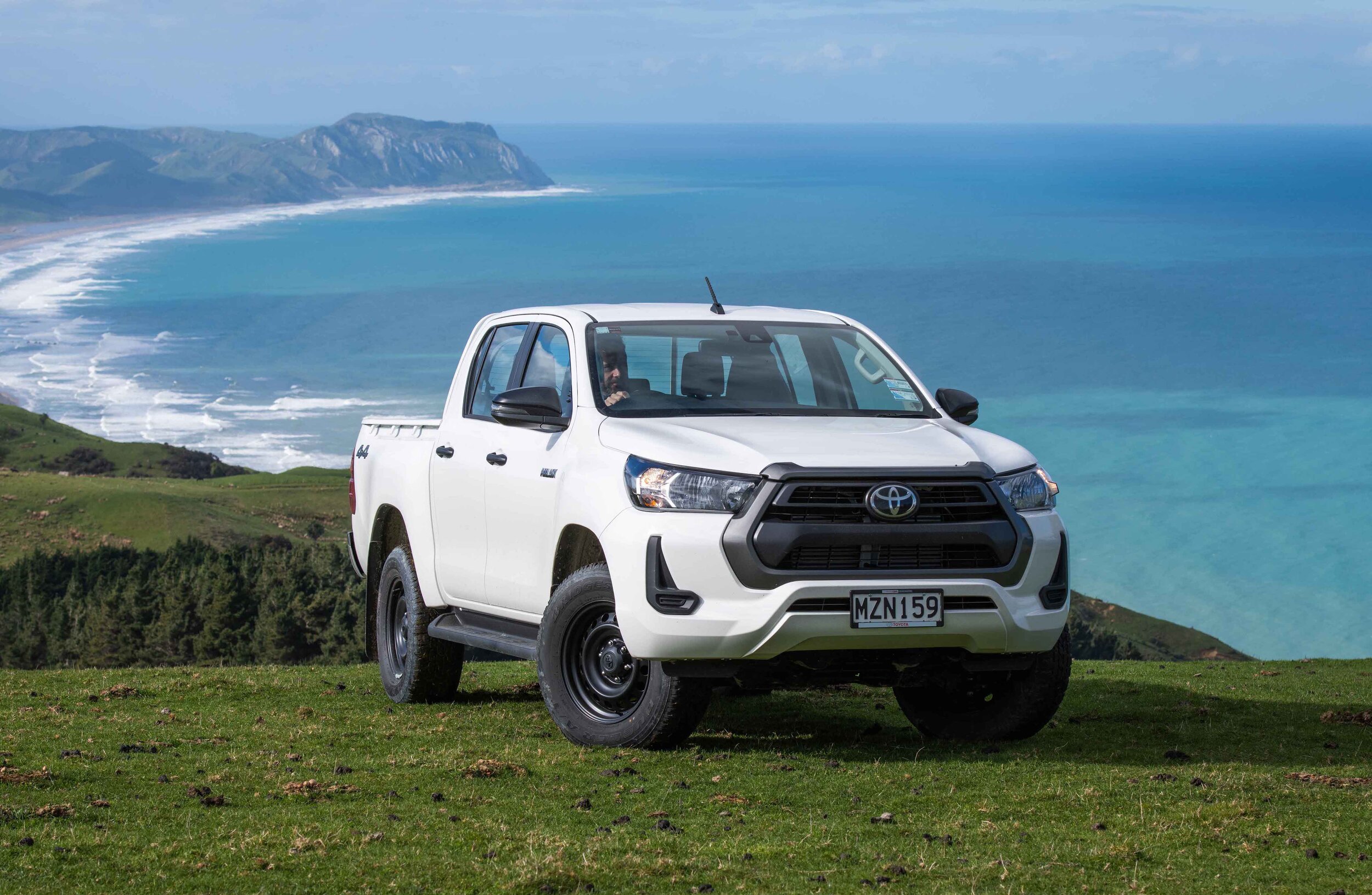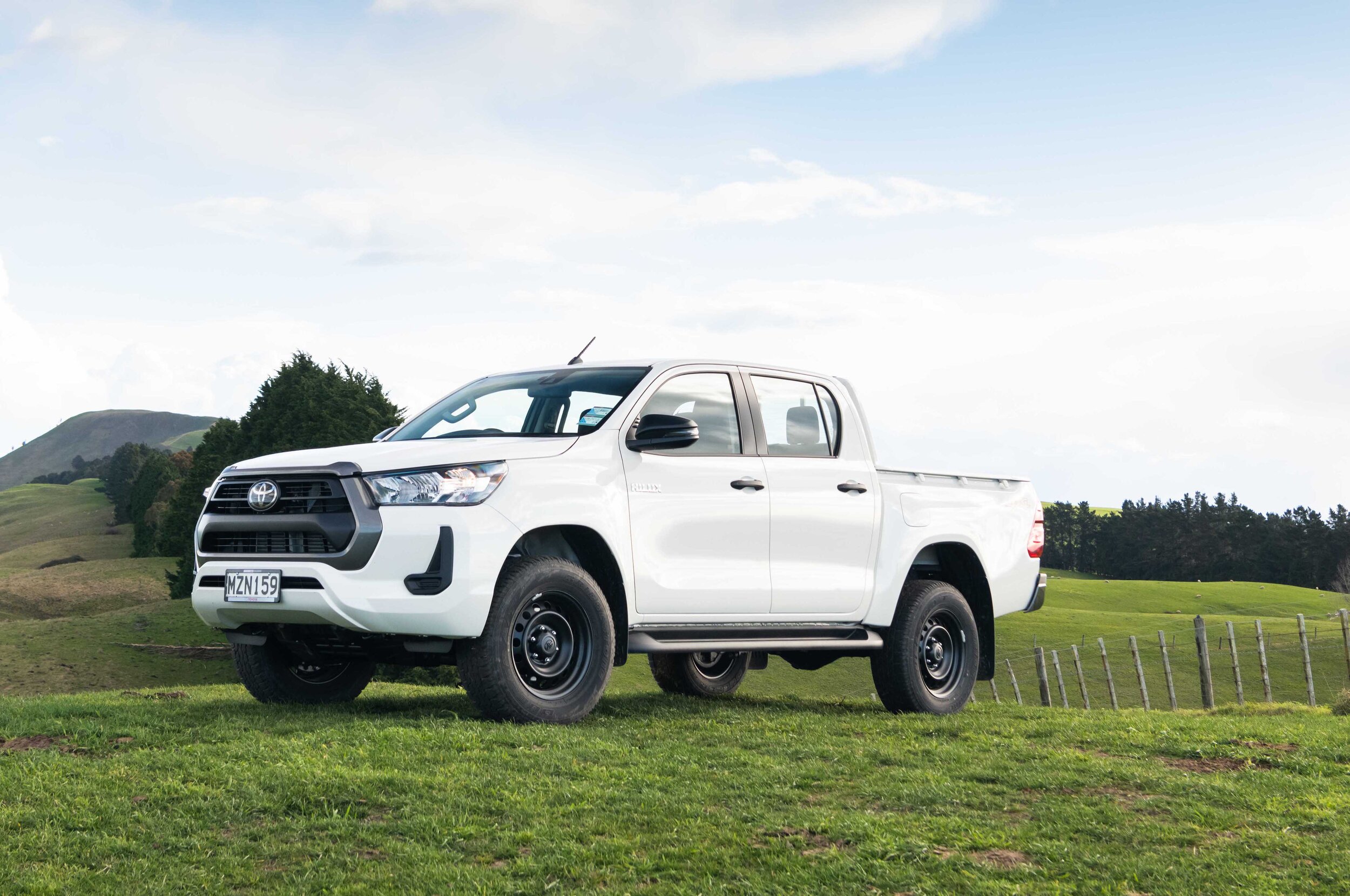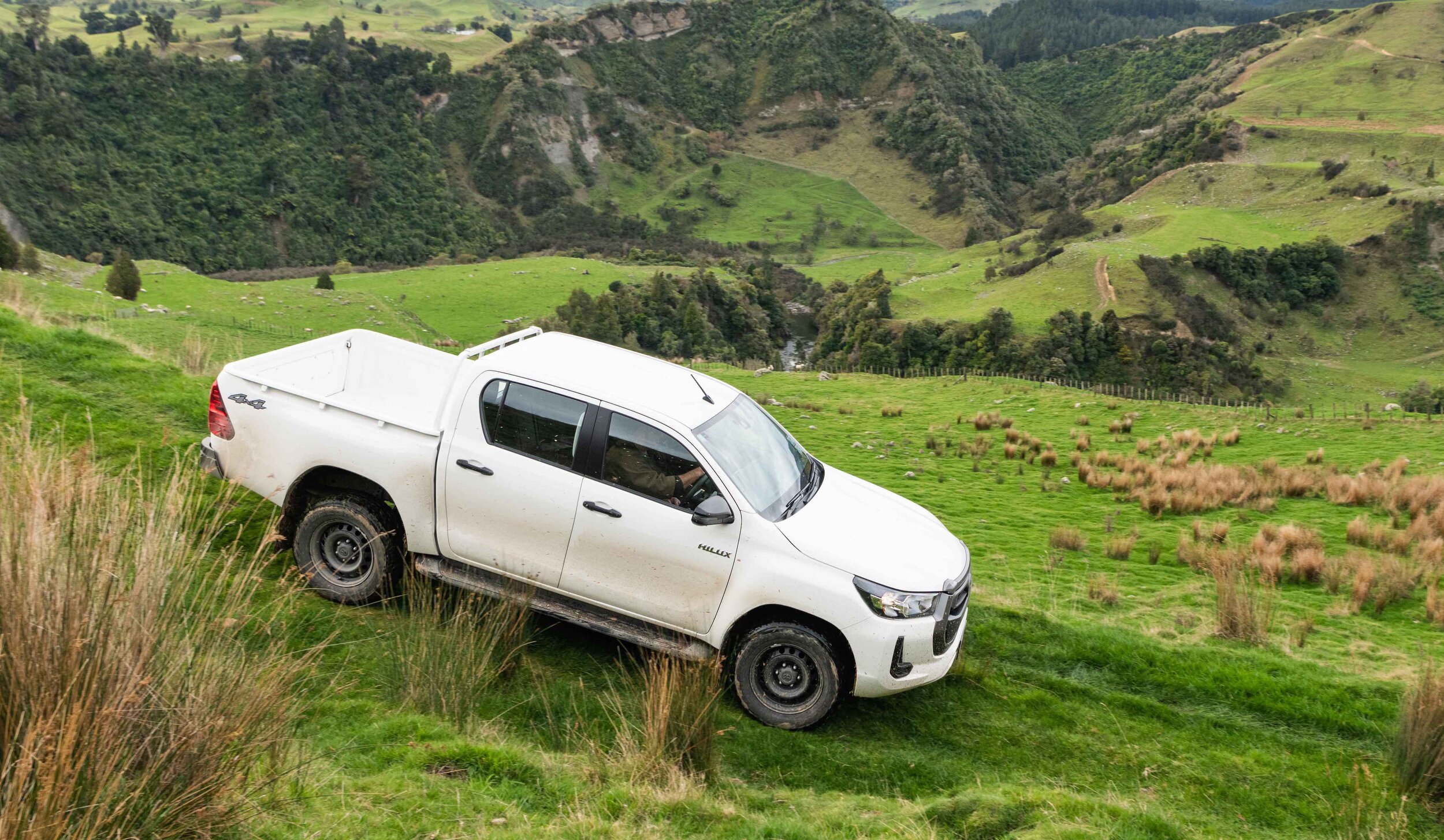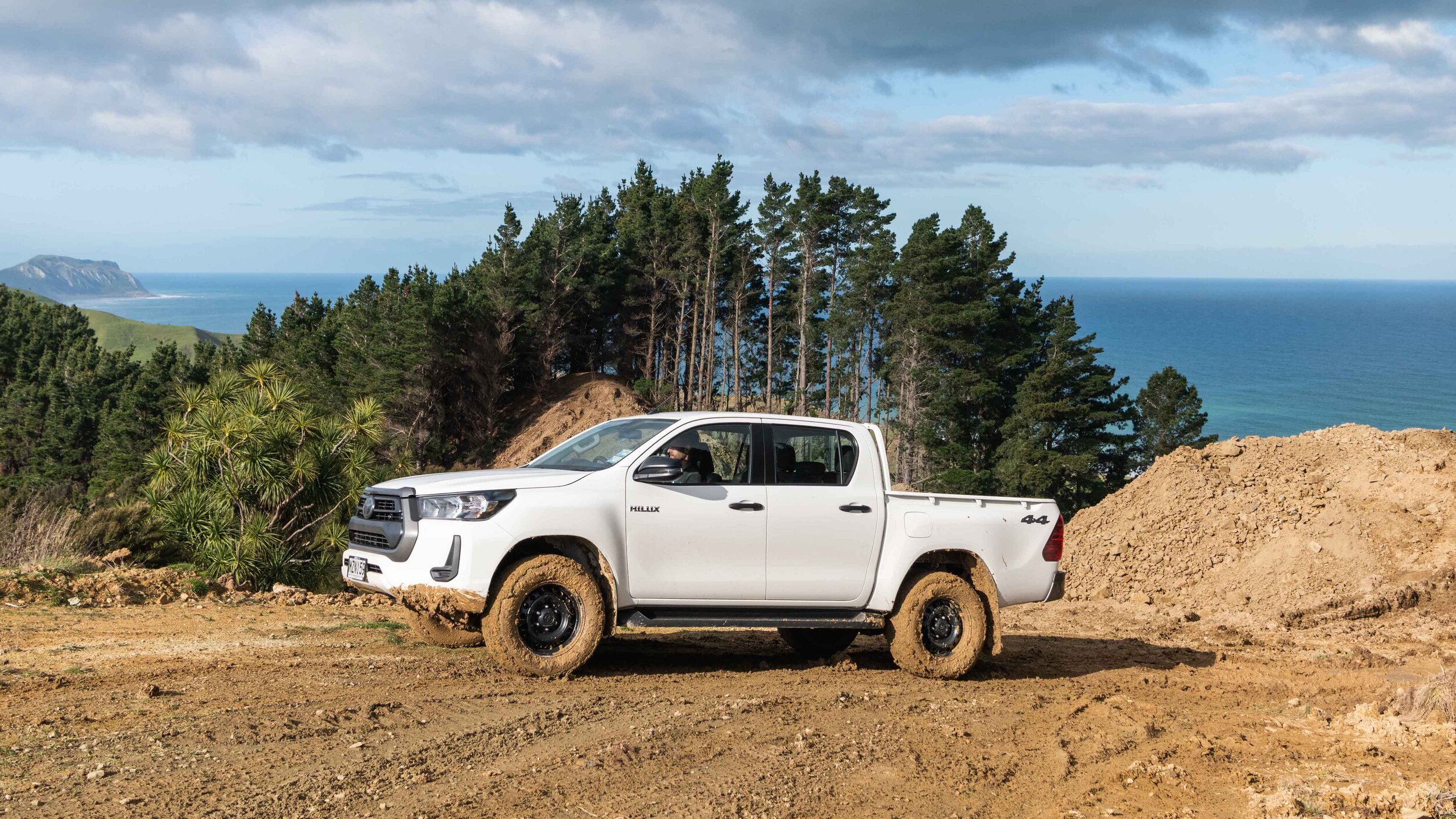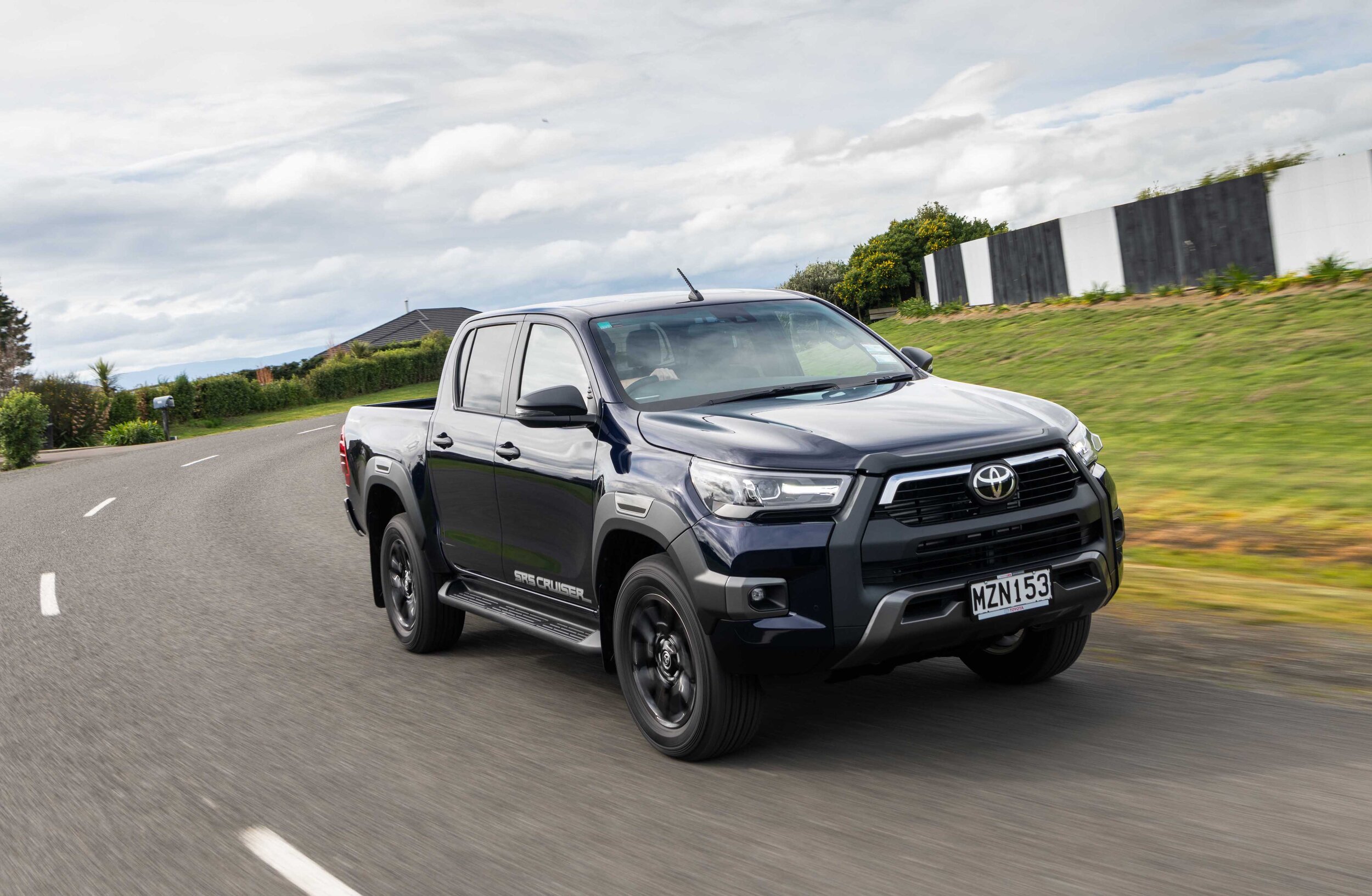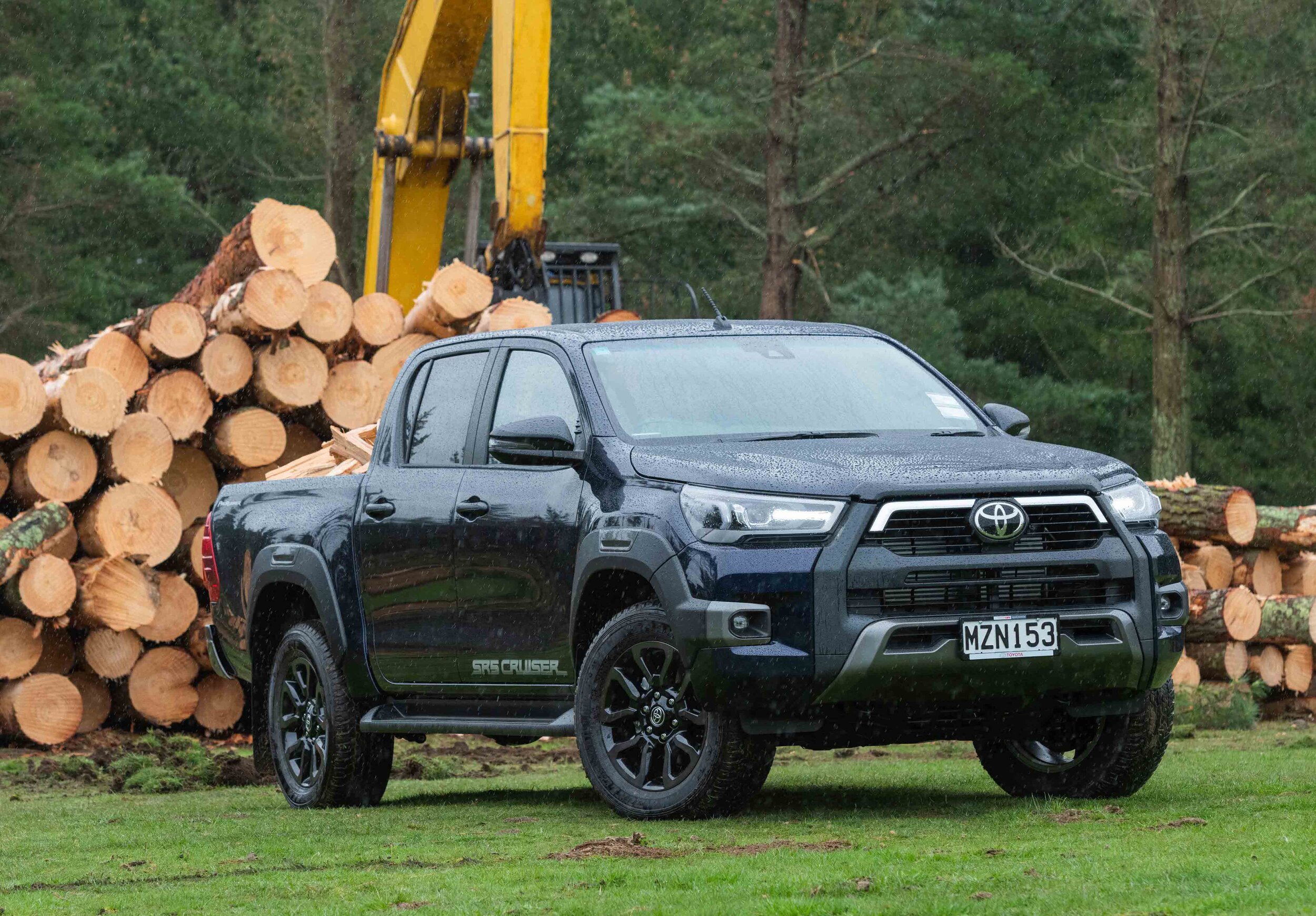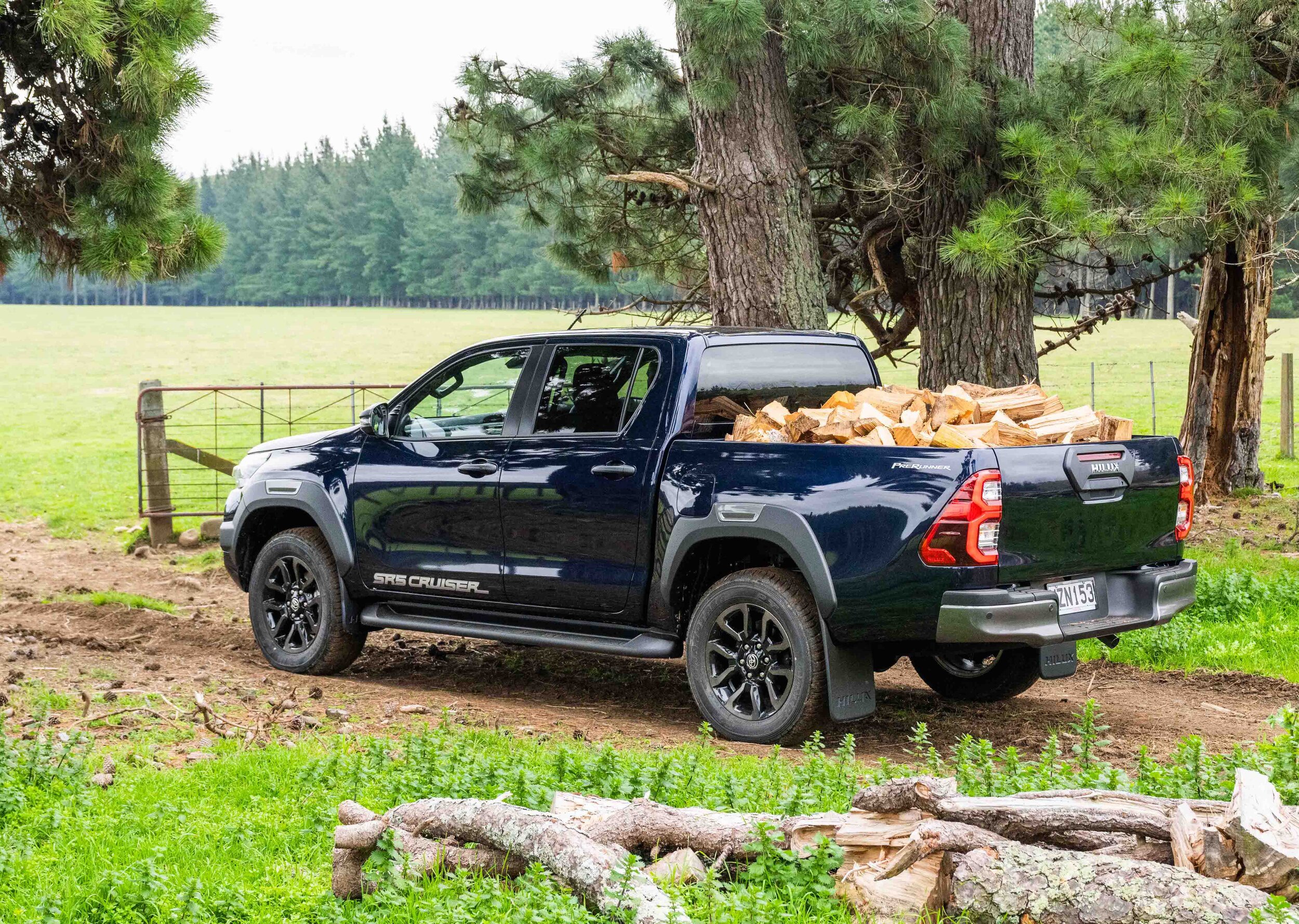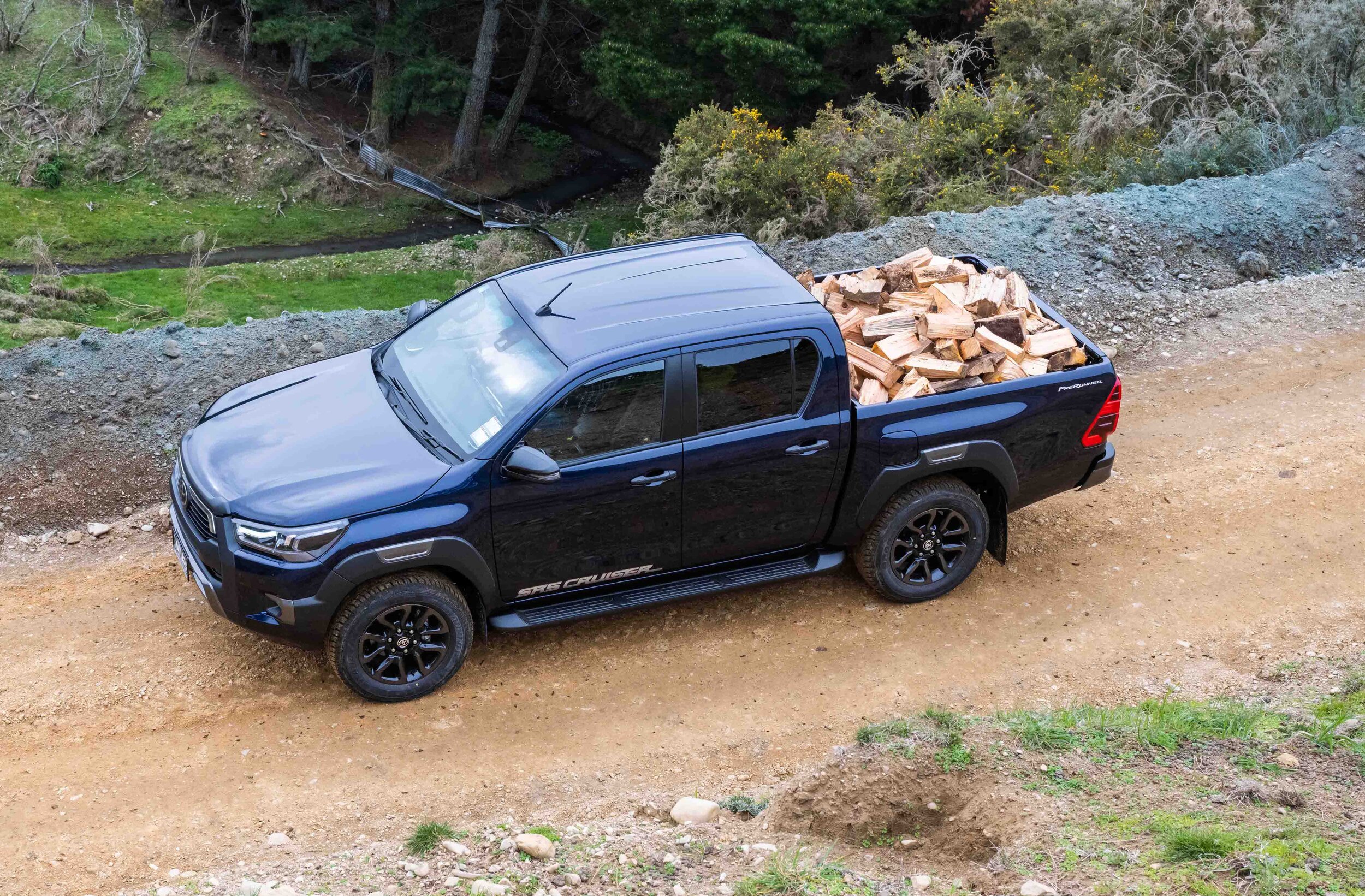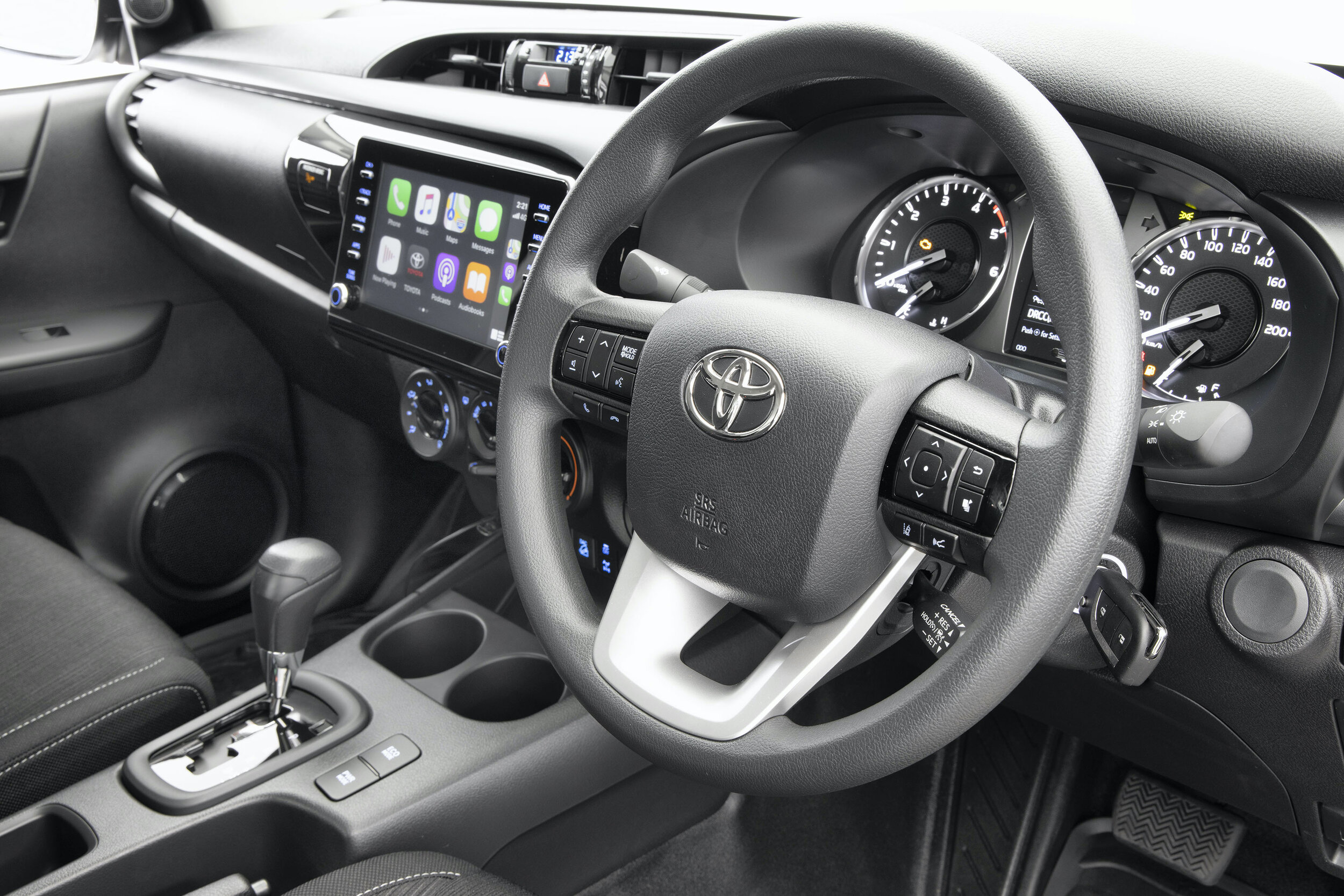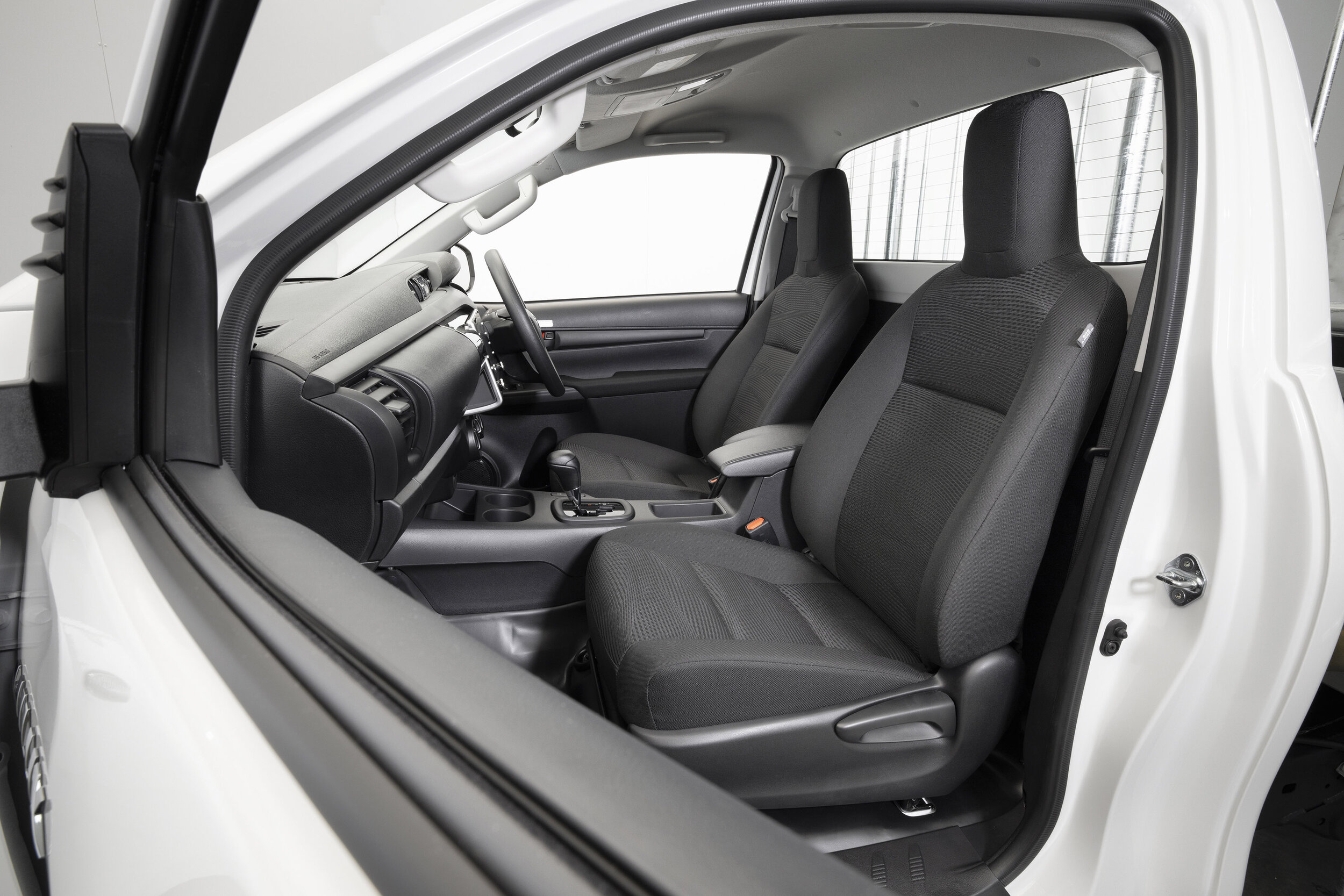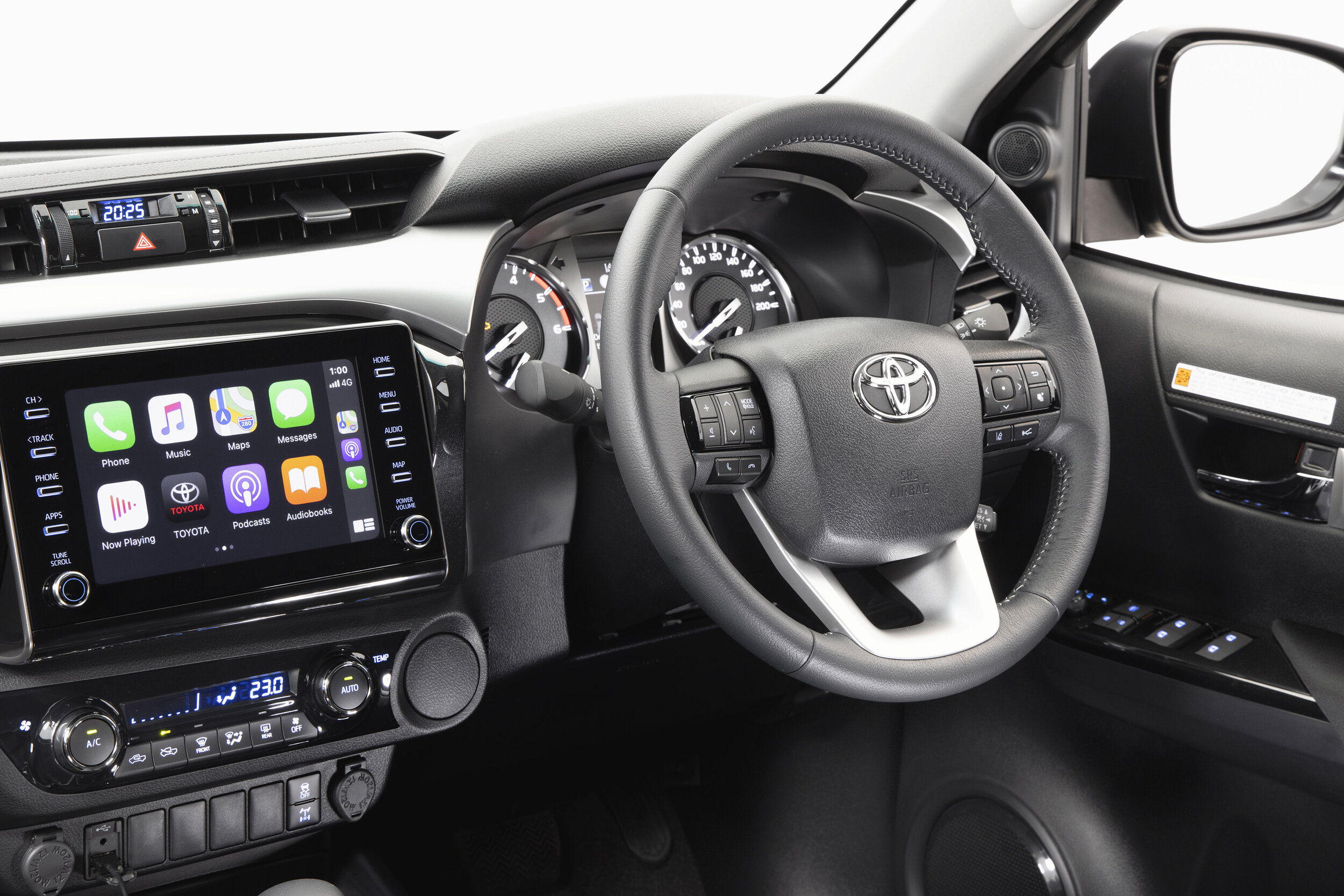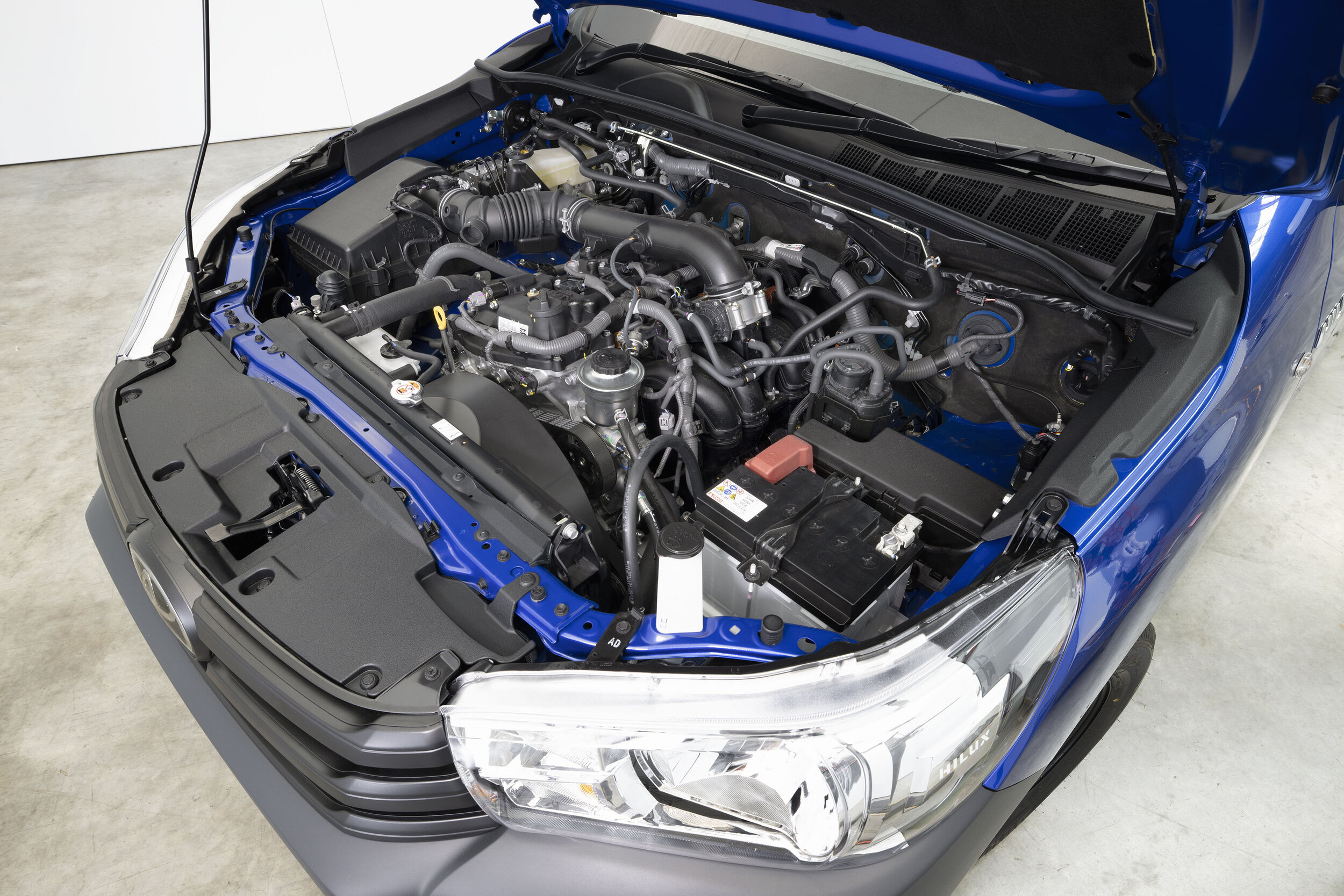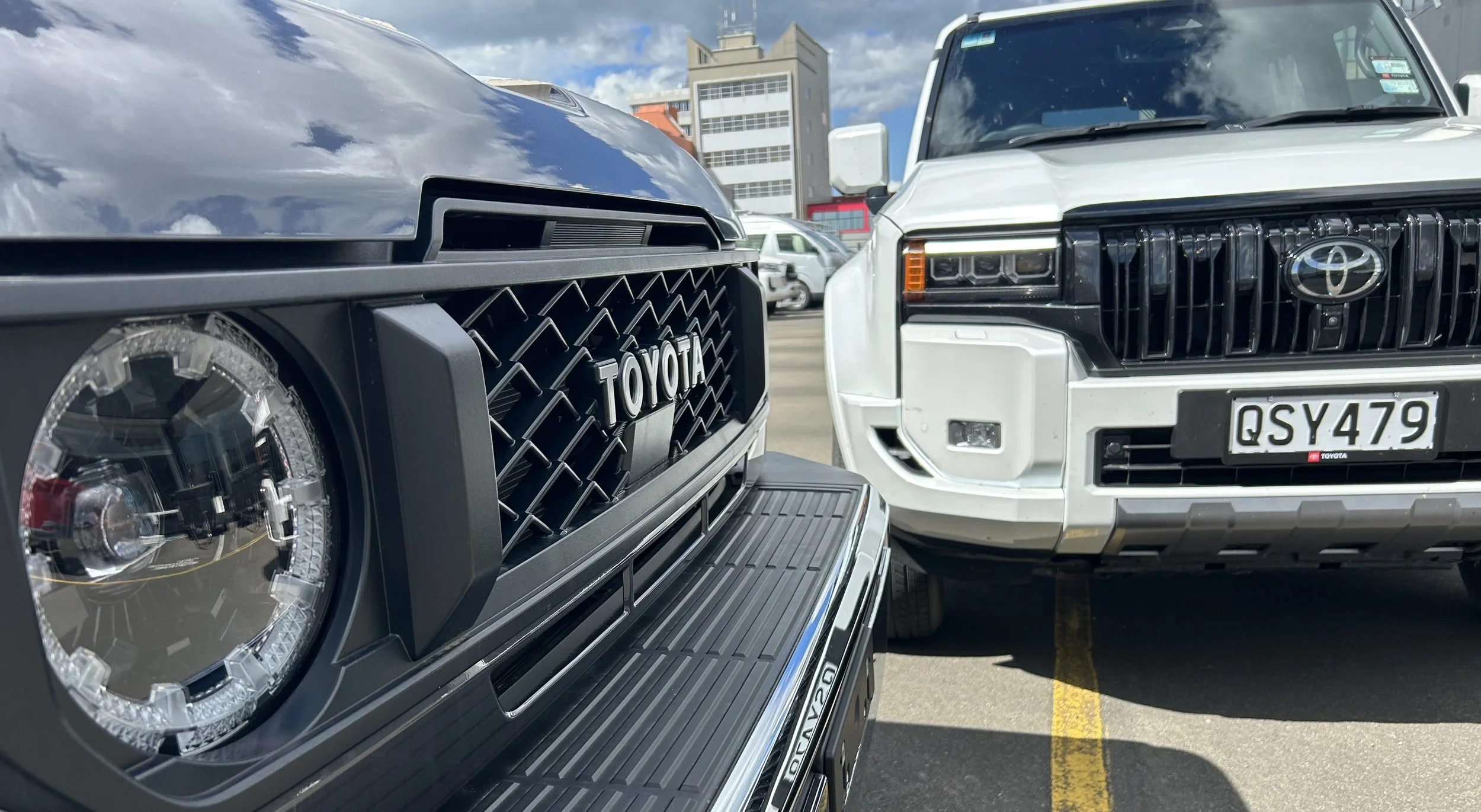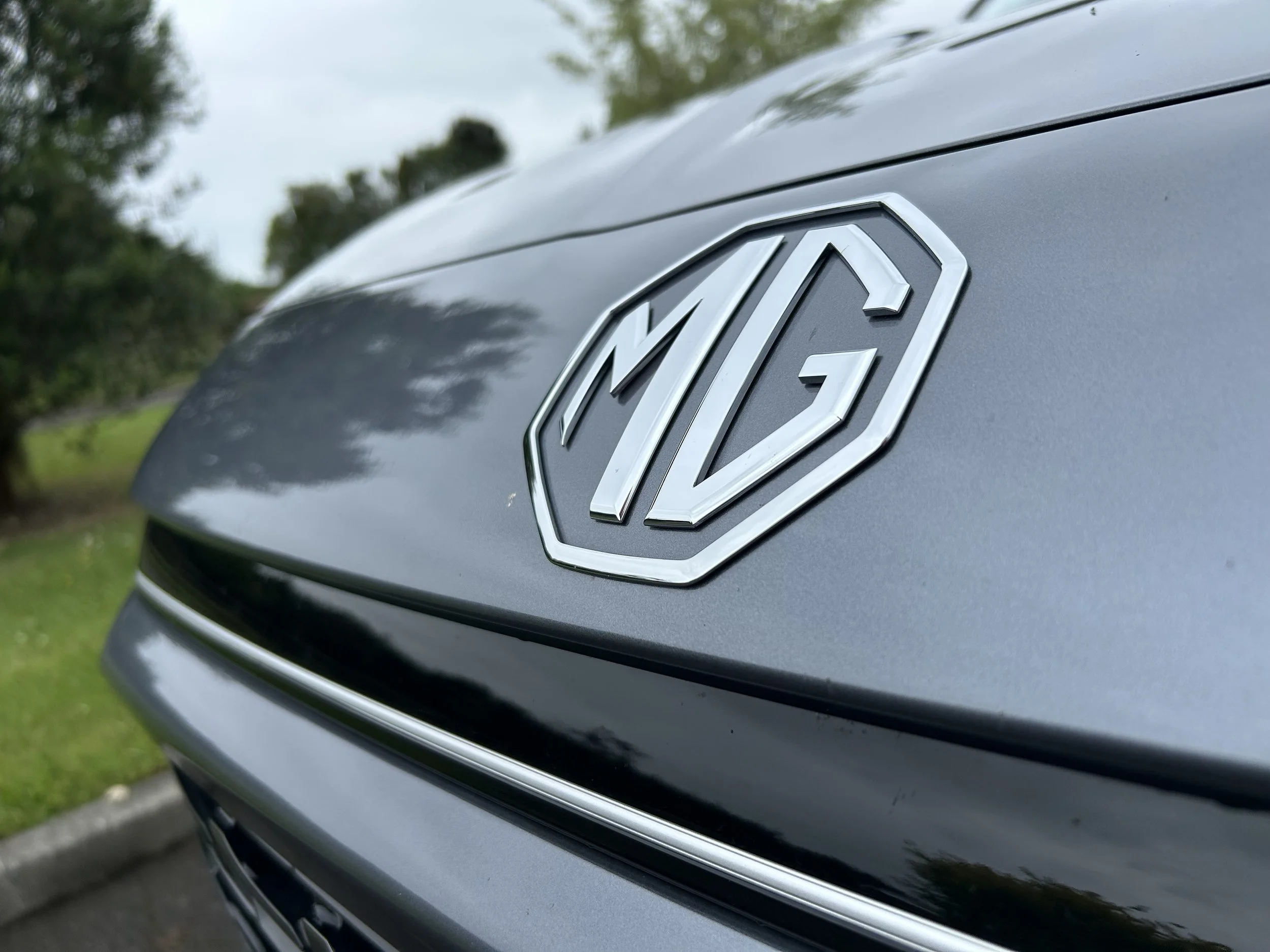Hilux Mako – hooked on the big fish
/We’re the first media outlet allowed to take the Hilux hero truck out for a big drive. Naturally, opportunity with this catch of the day wasn’t wasted.
No better place to take the hardest-edged Hilux ever than a back country property.
THUNDERING down rutted dirt and gravel tracks, pushing across some lumpy farmland, threading along a razorback ridge.
There was never a minute during those hours spent in gnarly hill country north of Whanganui when Toyota New Zealand’s homebuilt hero, the Hilux Mako, didn’t feel as though it wasn’t born for this kind of outing.
Surprised? Not at all. Aptitude for extreme adventure is an intrinsic 101 of this model’s make-up. In truth, it could – and likely will, in time – take on and overcome much stiffer challenges.
Not with me, however. At least not on this first occasion to test its mettle. Just one Mako is in existence. Moreover, it was finished just a week ago. I assumed my effort was the first properly outdoors activity it had ever undertaken. And also knew it was needed for important corporate duty straight after.
So, while it certainly got a fair workout, there was no ‘jumping the shark’ as it were. In that, there was never a moment when ALL four wheels simultaneously left the ground. Not really.
Was I being too soft? The Mako definitely isn’t. The re-engineering that delivers hugely increased off-road protection, functionality and looks to match is hardly a half-way measure, that’s for sure. Everything about it is hard as nails.
Somehow, too, the truck has bulked up in spirit, too. Mako is a well-chosen name. It’s a bit of a wild child in ambience as much as attitude.
Maybe it some of the feral side that showed in the lead-up to its grand media unveiling, three days prior to my drive, with talk emergent afterward of how resistant it was to being tethered for transit, for by road and then by air.
En route to the launch site, when contained in a enclosed trailer, it somehow managed to loosen tiedowns just enough to rub its nose against the bulkhead. When slung under a Black Hawk helicopter for delivery across open water to our foreshore gathering at Cape Egmont, it wriggled slightly again.
Hence the ever-so-slight slight scuffs on the wheel arch extensions; evidence where the strops shifted fractionally. This occurring just hours after the nose scrape was sorted. Seems some fighters just like to have scars.
If this was the ute revealing its fighting spirit, then bring it on. Nothing wrong with having a feisty attitude when aspiration is to beat the best in this game, Ford’s Ranger Raptor. Eagle versus Shark? The protagonists are not fully equals, but it’ll be hard to pick the winner of that one.
Buy-in demands certain stamina. At $79,990, Mako is in the same zone as all obvious rivals, yes, and so in a landscape far removed from the bargain end of the one-tonne ute market. Reminder of the cost of creating a champion is also enforced by knowing the Hilux SR5 Cruiser required as a donor is $21,000 cheaper.
So it’s an expensive undertaking, enough of a premium to perhaps leave you wondering why not simply undertake a Mako-your-own.
Good luck with that. it’s a dead-end drive. Breaking down the individual costings is a red herring. For sure, the core components of those Maxxis RAZR All-Terrain tyres (265/60) and the ARB Old Man Emu BP-51 suspension kit with its fancy nitrogen by-pass shocks enabling adjustable compression and rebound control are retail items. And yes, wheel supplier Black Rhino also represents in NZ. Buying the shocks, tyres and a same-size rim independently, getting them fitted and achieving compliance seems to be a $10,000 undertaking, give or take.
THE BP-51 suspension kit can be bought independently … and it definitely makes a difference. But it alone doesn’t make your Hilux a Mako.
And yet, you still wouldn’t have a Mako. Not even close. So much more of it comes from in-house and is set to stay that way. The front bumper is a good example of that. Hilux has more than 300 accessories, but this complex frontpiece ain’t one of them. Beyond that, there all the trim enhancements. And about those rims. The styling is bespoke to Toyota here.
At this point, it’s also fair to point out that a walkaround highlights how Mako has two donors. One being the Cruiser that sells here, the other being a variant that does not.
The Rugged-X is an Australia-only special, in its second evolution over the Tasman and also aimed primarily at owners who are likely to exploit Hilux’s renowned off-road ability.
Mako uses quite a few bits – most obviously the entire front bumper (a hoopless roo-bar in Aussie speak), but also the bash plates underneath, LED light bar, easy access heavy duty recovery hooks, unique fender flares, side steps and rock rails and customised tray – developed for the latest Rugged-X.
Getting that new front alloy bar is the biggest score: Not only does it offer extra protection from obstacles and wildlife, it is designed to accommodate a winch, houses a high-intensity light bar and does not affect the Hilux’s safety systems.
Don’t think we’ve just stuck a new name of an Aussie effort. Mako has a similar look, but is quite a lot more hardened in other respects.
Specifically, our neighbour’s muscle truck lacks the increased suspension lift, the wheel and tyre package, the suspension or even the leaf spring upgrade.
The latter part of the refit has seriously impressed across the Tasman. They’re a little chastened by how this makes the Rugged-X puny by comparison.
These bits look rugged … or, more specifically, Rugged-X.
And there’s a good point. As much as some might well be drawn to joining the Mako tribe purely on strength of its the more purposeful look, they’re not really playing the game. To buy a Mako for its aesthetics alone would be a waste of the time and effort that has gone into creating a genuinely enhanced four-wheel drive.
But, yeah, also one that’s somewhat removed from the mainstream Hilux experience.
Insofar as ride height goes, it’s amazing how a little – and a 40mm lift front and 50mm lift rear is surely that – can make a lot of difference. Be as it may that Mako’s body is just about a shoebox further away from ground than a standard Hilux doublecab’s, just this is enough to make accessing a more physical and somewhat acrobatic act.
In all likelihood, it is higher enough to raise question from some quarters about the ease with which you can jump in and out of a vehicle if you need to do it repeatedly. The side steps are useful enough to be practical, and they aren’t too slippery either, but that initial step up is significant.
Once you’re in the cabin, awareness of the enhanced elevation and the wheelarch extensions’ affects sensory perception of its stature. It’s certainly not a RAM rival, of course, yet it does have a tangibly more bulked ambience.
Visibility isn’t too bad, though, and the new motorsport-style front seats – well, seat backs, to be precise (the original base has been retained) – is really comfortable, if a little flatter-backed and less shoulder-hugging than the design’s look might suggest.
A regular Hilux is pretty good off road … but it cannot do this.
How hostile the urban jungle prove is open to conjecture at this point. It probably won’t be too bad or, at least, no worse than any other one-tonne ute. The Hilux lacks blind spot indicators but there are parking aides and a reversing camera to keep an eye on the tail end. The front assemblage adds a few more millimetres to consider when manoeuvring in tight spaces.
No town and around today. I’m off to rendezvous with the bloke who help guided TNZ through its suspension and tyre choice by field testing all the components.
Tony Groome is a well-known Manawatu-based identity in off-roading who handily resides within 20 minutes of TNZ headquarters and whose association with the brand goes back quite a few years.
We in the media have come to know him through press events – his amazing knowledge of the Kiwi back country and a vast network of contacts has allowed us access to some amazing country and to meet some really neat characters – and also through his involvement in creating the Gladiator, a one-off show truck from three years ago that was effectively the genesis of Mako. Same suspension, slightly gnarlier and larger rims.
Toyota involvement is additional to his day job. That’s being a professional and independent forestry advisor. He has more than 25 years’ experience working in both corporate and private forestry throughout New Zealand. His skills range from forest establishment and silviculture through to the harvesting and marketing of forest products. It’s a busy life but, on top of this, he also involves heavily into rural firefighting and search and rescue; his contribution to LandSAR was recognised with him being made a member of the New Zealand Order in the 2016 New Year Honour List.
Today I’m tagging along with Tony and Thomas, his go-everywhere poodle/cavalier King Charles cross, and employee Rob as they head into a block inland of Kai Iwi where they’re trialling a new forestry-associated enterprise of grass hydroseeding. Basically, high-pressure spraying of a seed-rich slurry onto hillsides requiring regeneration after being denuded of trees. Today is about experimenting with two different consistencies of mix, one paper-based and the other wood.
Tony Groome is a well-known off-roading expert who field-tested the Mako’s hardware. Thomas the dog also did his bit.
While he’s fire-hosing hillsides, I get to ramble around some incredible country, taking care of course to steer well away. It’s not the likelihood of being caught in a jetstream of gunk that worries, more the fine mist of spray being lifted and carried some distance by a stiff breeze. A common component of the mixtures is a bright green dye (used so you can more easily see where the stuff has landed). It stains easily. Neither of us wants to have to explain the scenario of a silver Mako having gained a bright green top coat.
Messing about on a selection of hard clay tracks reinforces the merit of using it for its intended purpose away from the beaten trail. As competent as a regular edition Hilux is … well, this thing is even better.
That’s not to say it’s an absolutely required recipe: Obviously Hilux carries a massive reputation, and for good reason. The latest as it comes from the factory is a hugely capable machine, no argument. Simply, though, the extras here just raise the ante.
The proven all-terrain transmission adapts easily to marriage with much gripper tyres, the enhanced engine feels punchy enough and never feels overworked, while the increased ground clearance encourages driving across terrain that would look hostile to the regular models. The only additional ingredient that I would suggest to make it even more capable would be to include some electro-pneumatic diff lockers; I know from experience that ARB’s are particularly good.
Quite often vehicles outfitted for extreme off-roading tend to gain sludge proficiency at expense on on-seal aptitude. On top of this, cruising on sealed open roads isn’t any ute’s favourite habitat.
Tony’s work truck also runs BP-51 suspension.
Still, the on-tarmac component of the MY21 Hilux’s launch programme had reinforced how it has become better suited to this than its predecessor.
The tyre and suspension change certainly lends Mako a different feel, that’s for sure – it’s floatier to the point of being cushy, though with generally positive outcome: The way in which it smooths out pock-marked surfaces is impressive.
There was one section of rutted gravel that I drove half a dozen times, each run slightly faster than the fast. All through this exercise, the Mako not only smoothed the ruts but, just as importantly, kept its settled demeanour, tracking straight and true. That alone suggests the main competencies engineered into the MY21 still seem to remain.
Impression from clocking almost 200kms’ on seal suggests that, as much as it’ll seem set to appeal to genuinely enthusiastic off-roaders looking to get more out of a Hilux than the standard version can perhaps offer with confidence, it hasn’t become so altered as to lose grip on the realities and requirements of daily driving.
The tyres? Knew you’d ask. With the donor model and every other Hilux save the base edition, Toyota uses Bridgestone’s Dueler: A road-biased tyre with some off-road competencies. From the look of it, Mako takes the opposite approach, favouring a type whose design and tread cut suggests mucking-in ability is prioritised. However, it’s still designated an all-terrain tyre.
Mako sized up the terrain and then conquered it, no sweat.
The day’s driving was in dry conditions so how skatey those RAZRs will prove on wet seal remains an unknown. From this experience, they are less grippy than a specific road-focused tyre, and take very little provocation to squeal, but are not diabolical. Refreshingly, they aren’t too noisy on the road, even on coarse chip at highway speed.
Mako ‘production’ won’t ramp up until year-end, and in the interim TNZ is using this one to iron out any bugs. From my experience, there are none to cause sleep. A bit of clonking from the suspension when it was being worked out off-road might be something worth addressing. Also, there’s a weird switching arrangement for the front bumper light bar. And the laser-etched side footplates are dirt traps.
Really, though, the only thing I didn’t like didn’t require mentioning on the ute’s return because it turns out TNZ is having second thoughts about it as well. That’s the rim thickness of the bespoke steering wheel; it’s just a bit awkward to grasp. TNZ’s already onto this. They’ve already crafted another. Should I mention that the first attempt was basically a dimensional copy of a certain rival’s?
Beyond all that, Mako is a fantastic effort that shouldn’t be taken lightly. It certainly succeeds as a banner-waver for Toyota and Hilux, turning a lot of heads and raising a fair few questions on my day out.
One TNZ might like to take on board is in respect to an engine that does not exist. Seems speculation recklessly spread months ago about Hilux being a candidate for a twin-turbo six-cylinder performance engine is sticking. Several people who saw this truck asked if that engine was under the bonnet.
Conversely, everyone seemed pleased by what Toyota has done. The feedback I heard reinforced what TNZ has long claimed; that Hilux is more than a ute to many – it’s an old mate.

